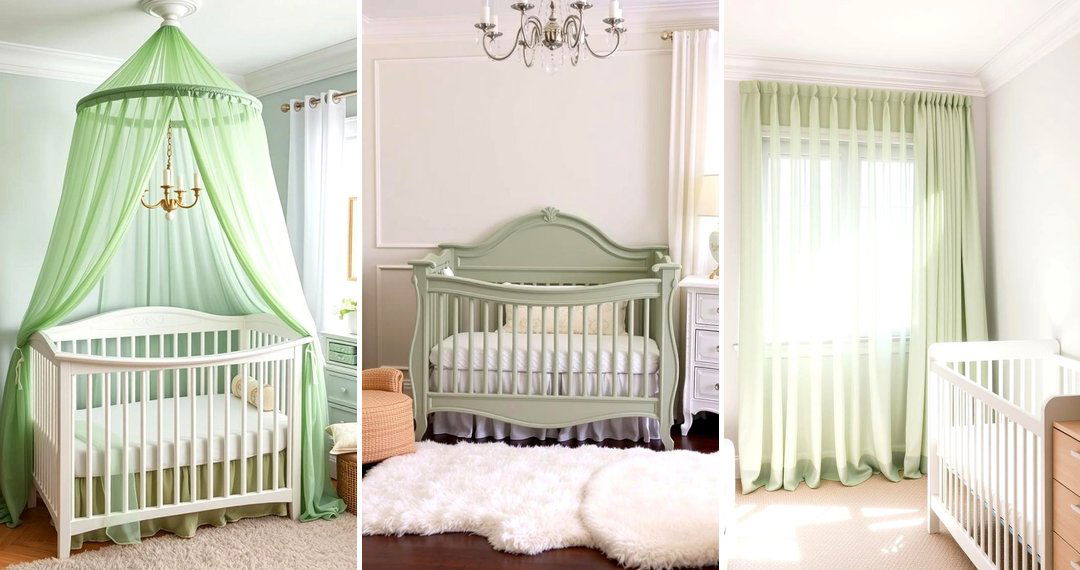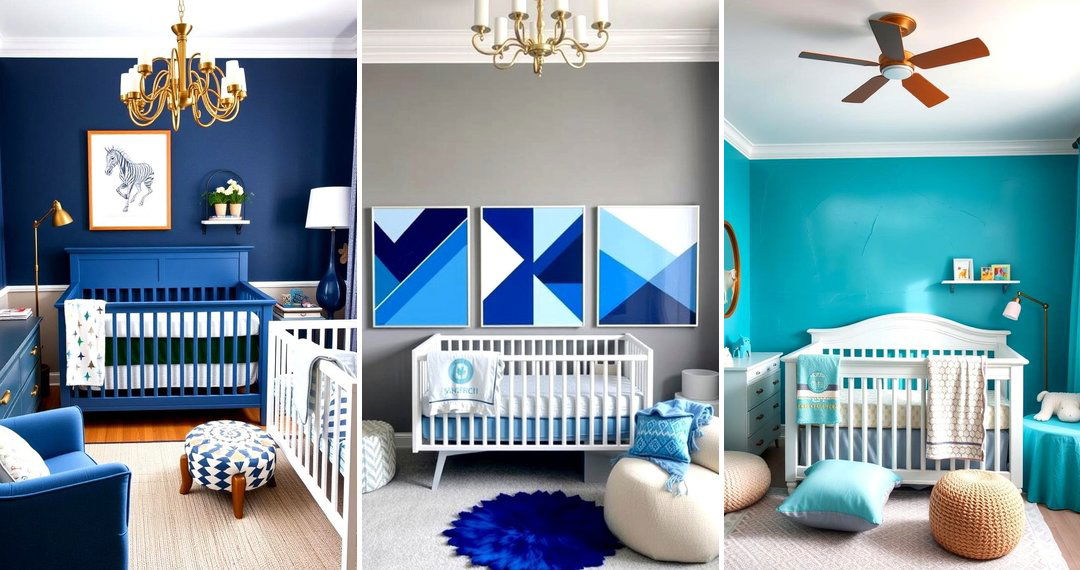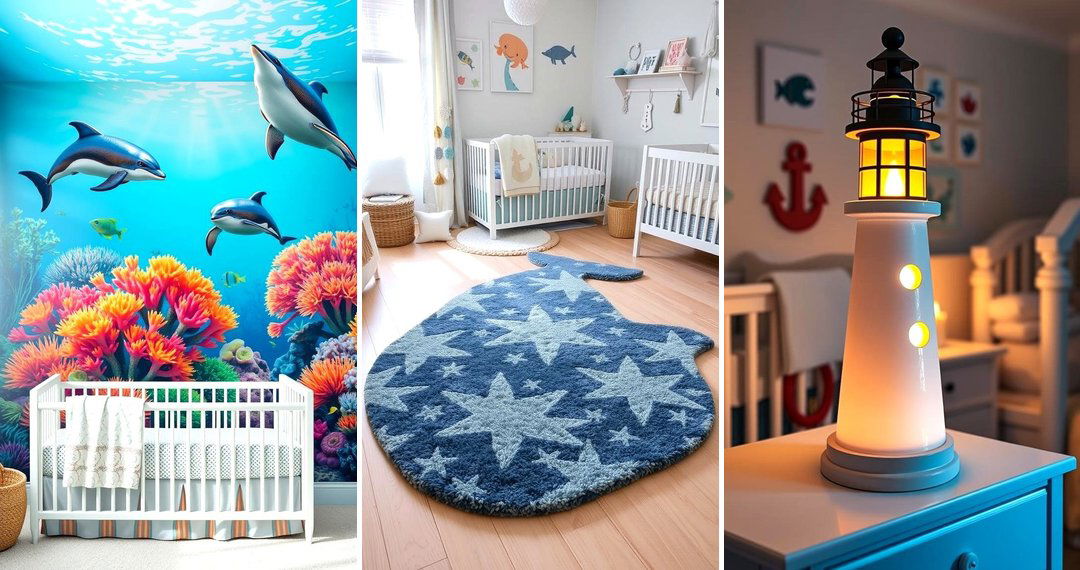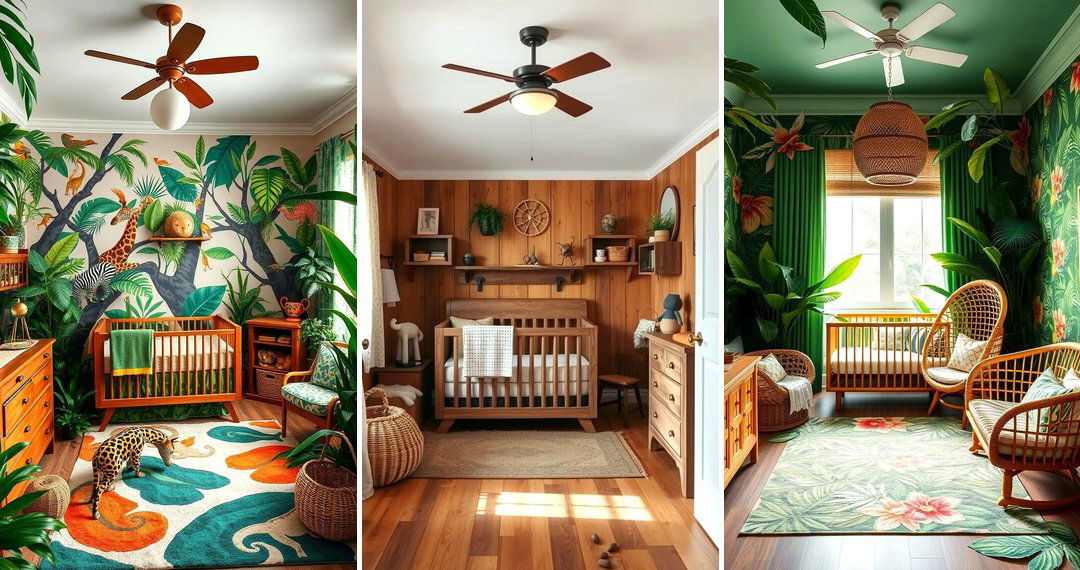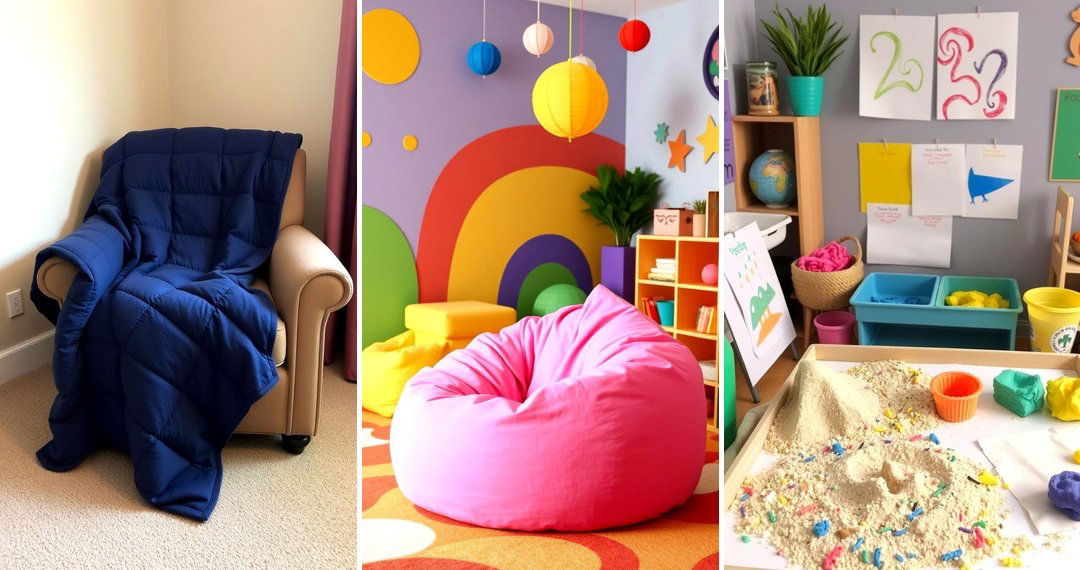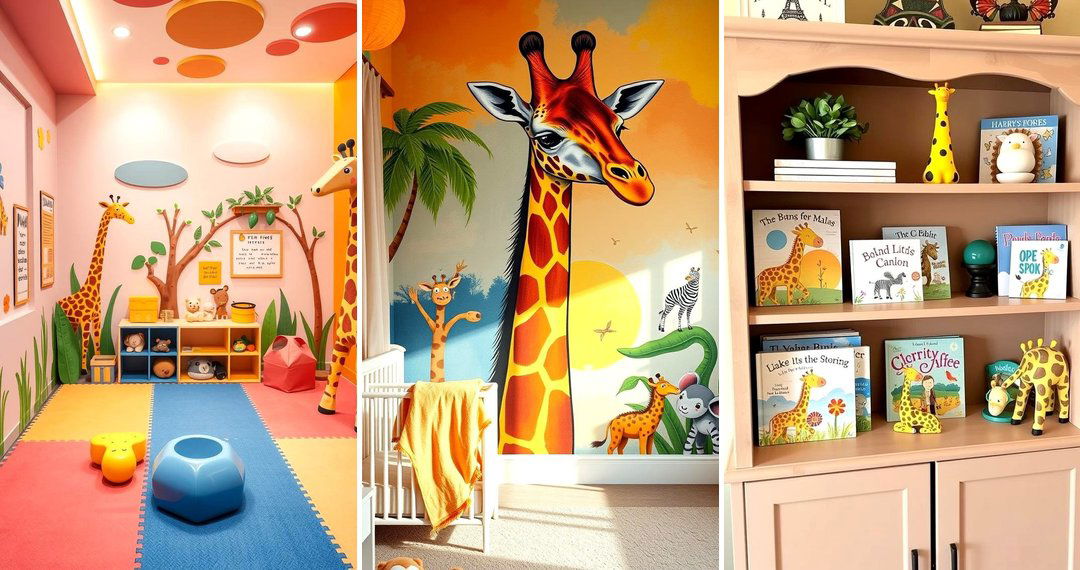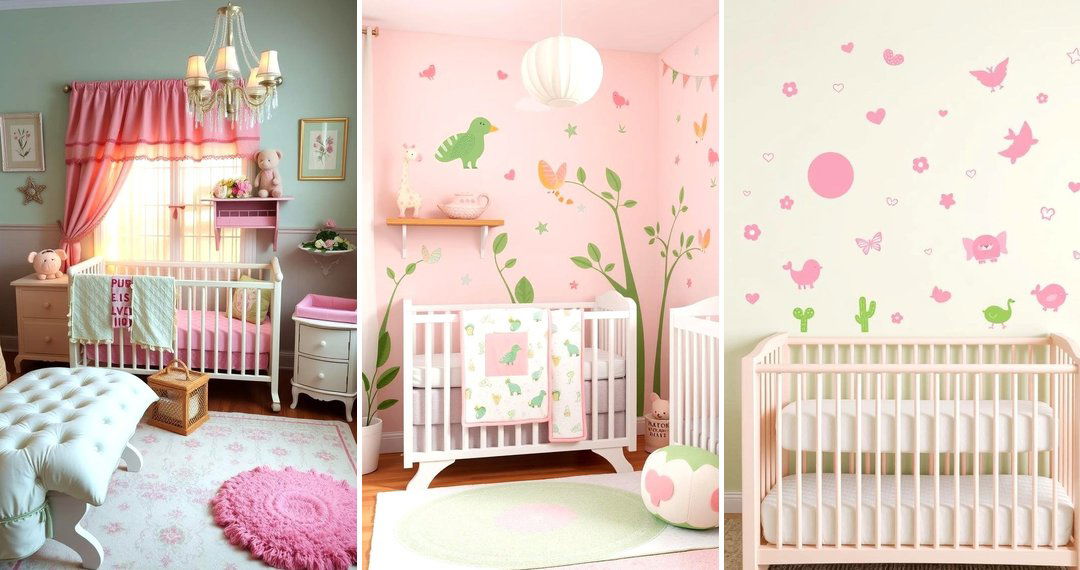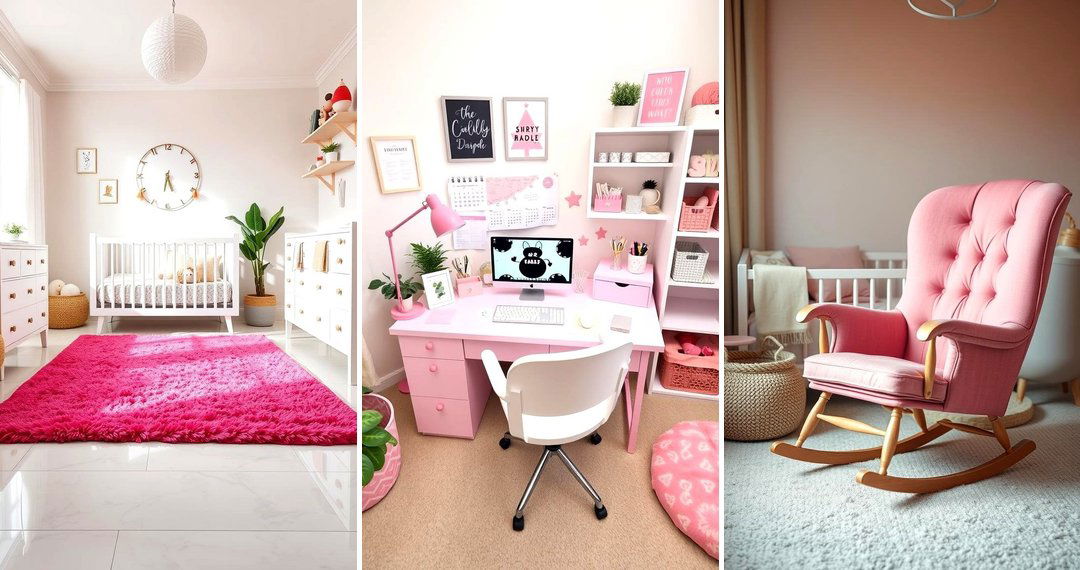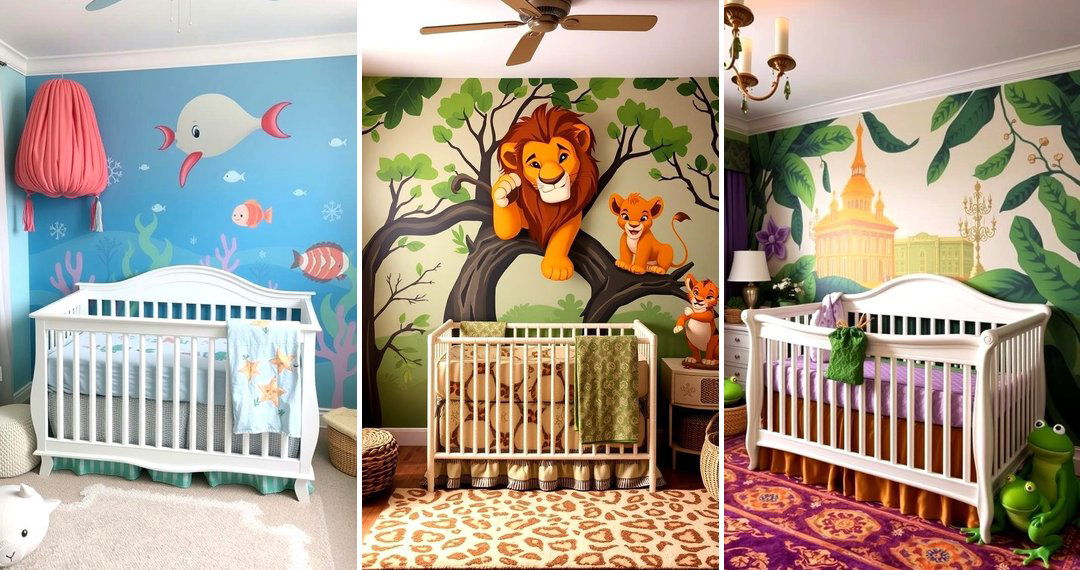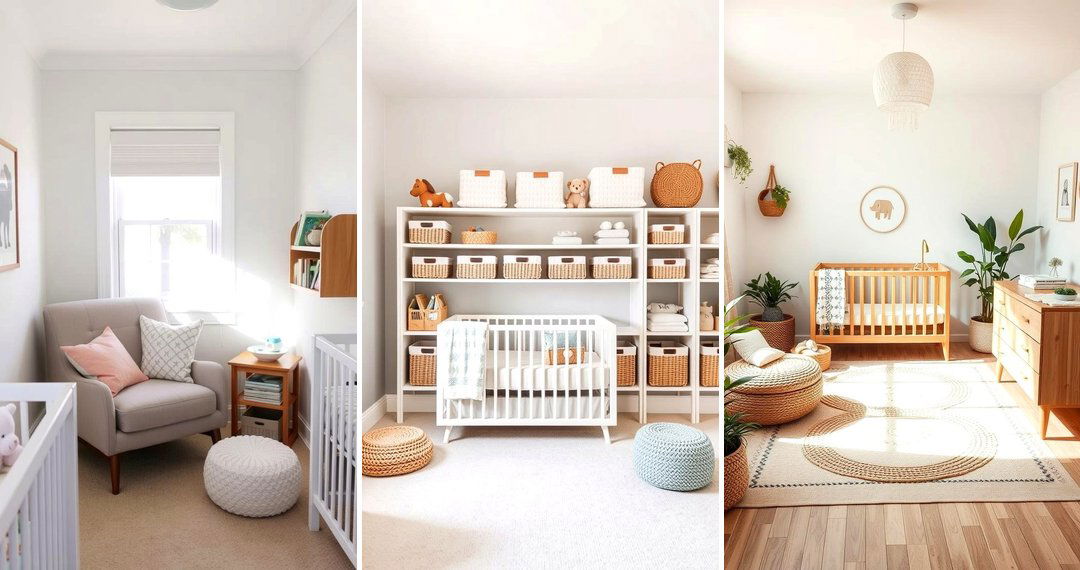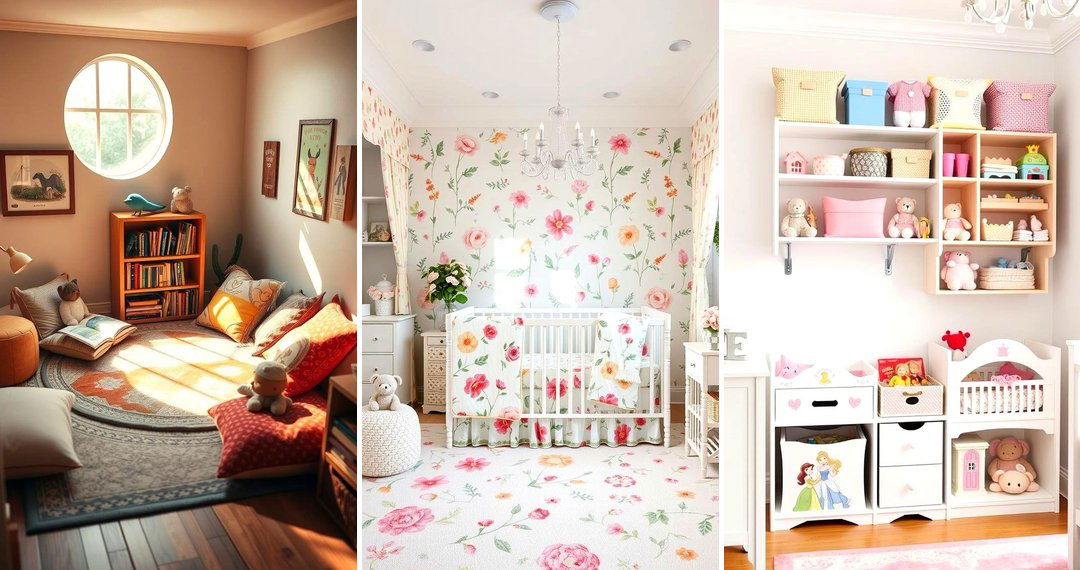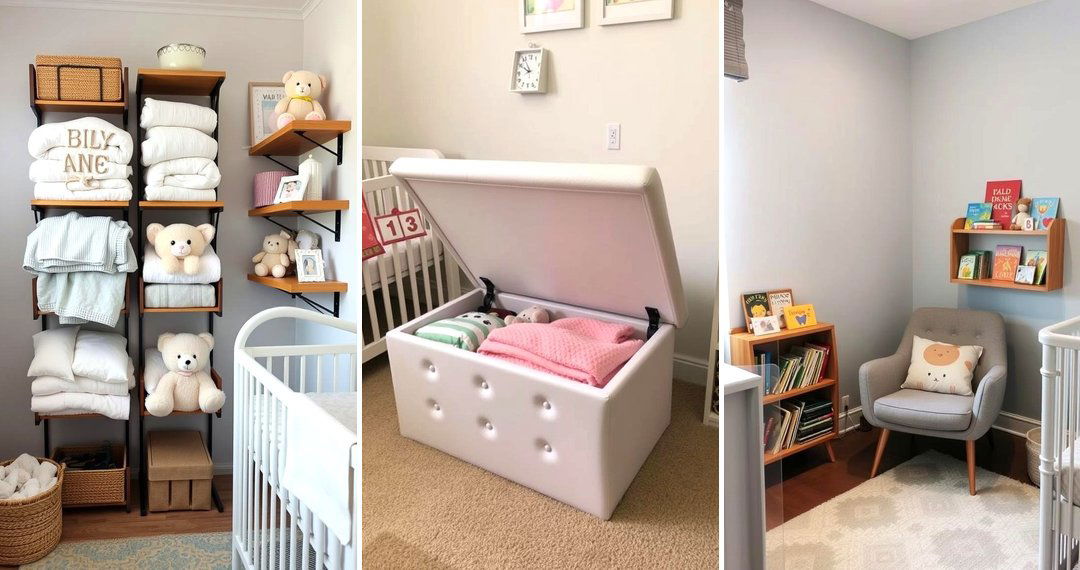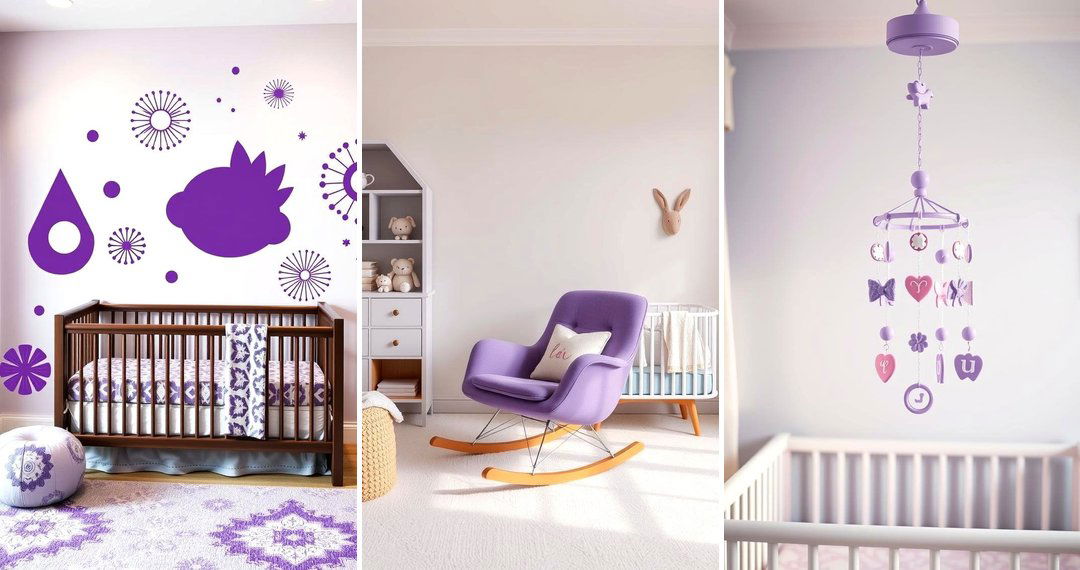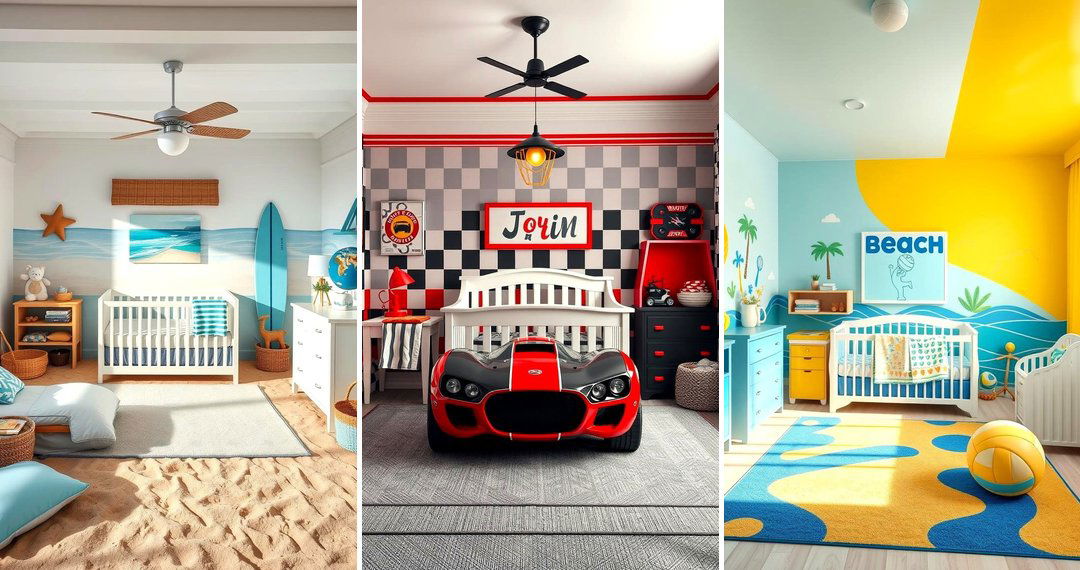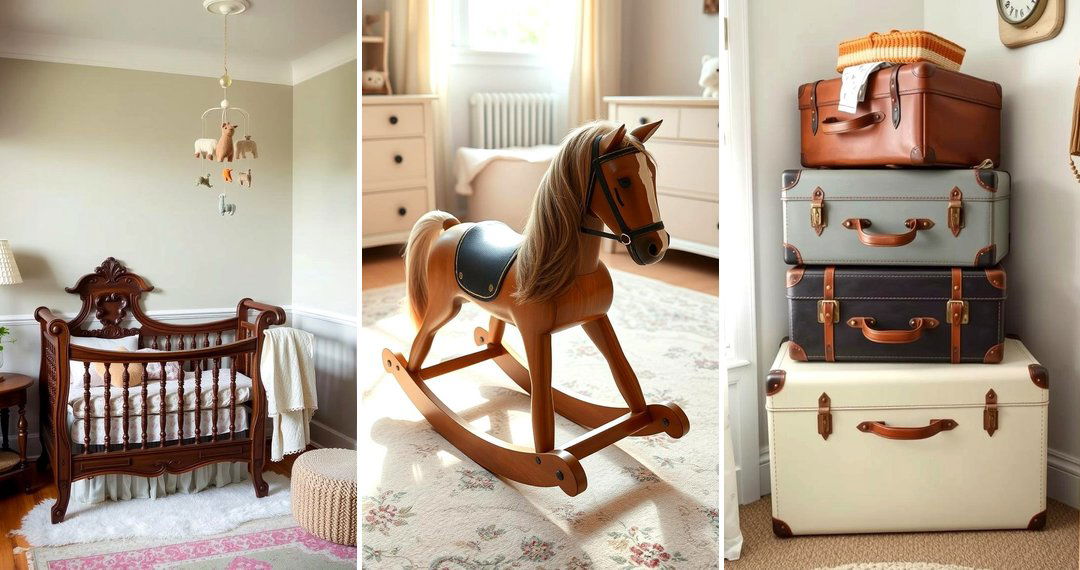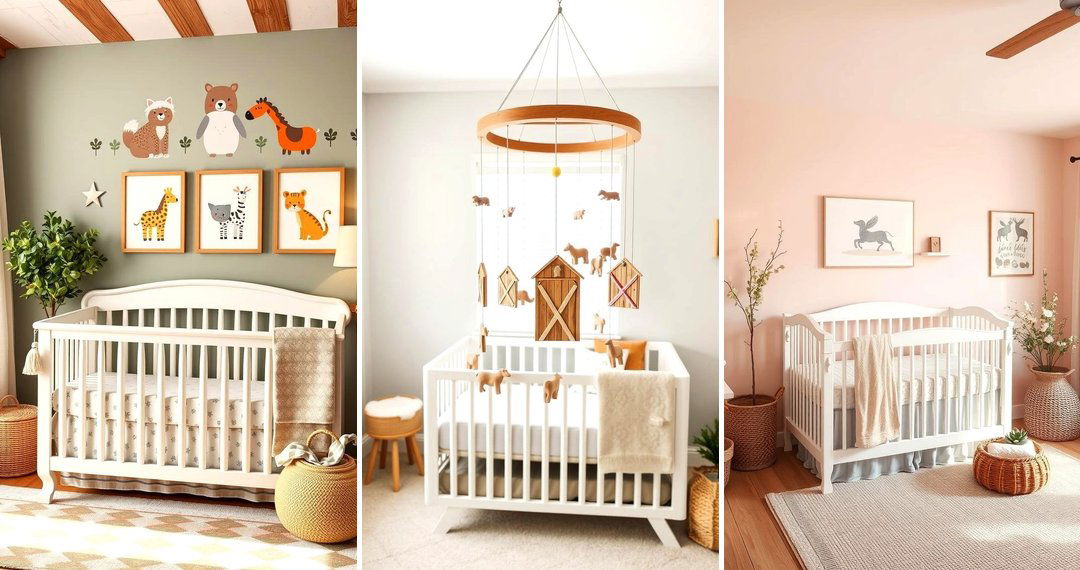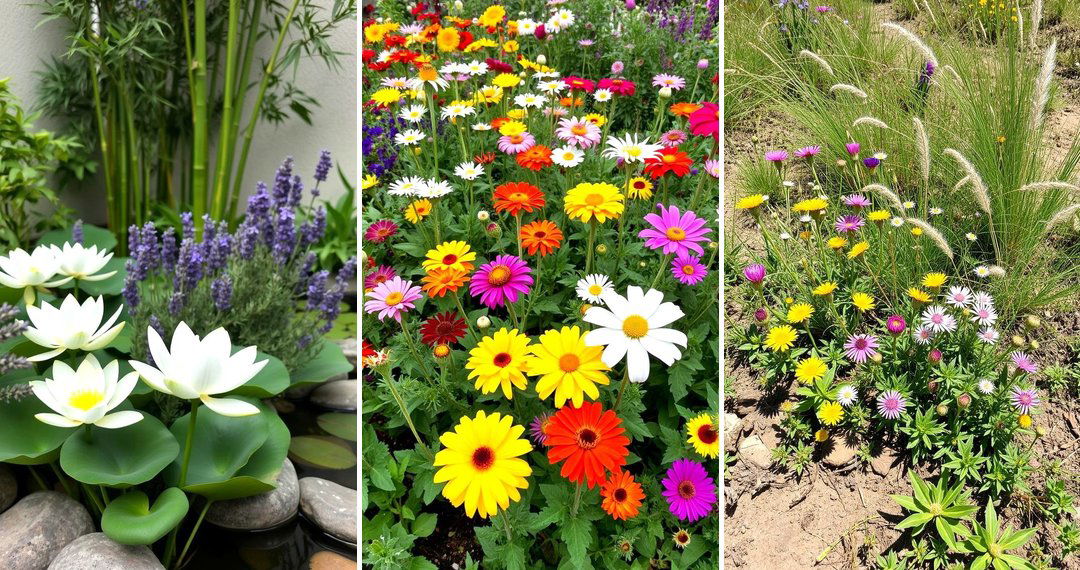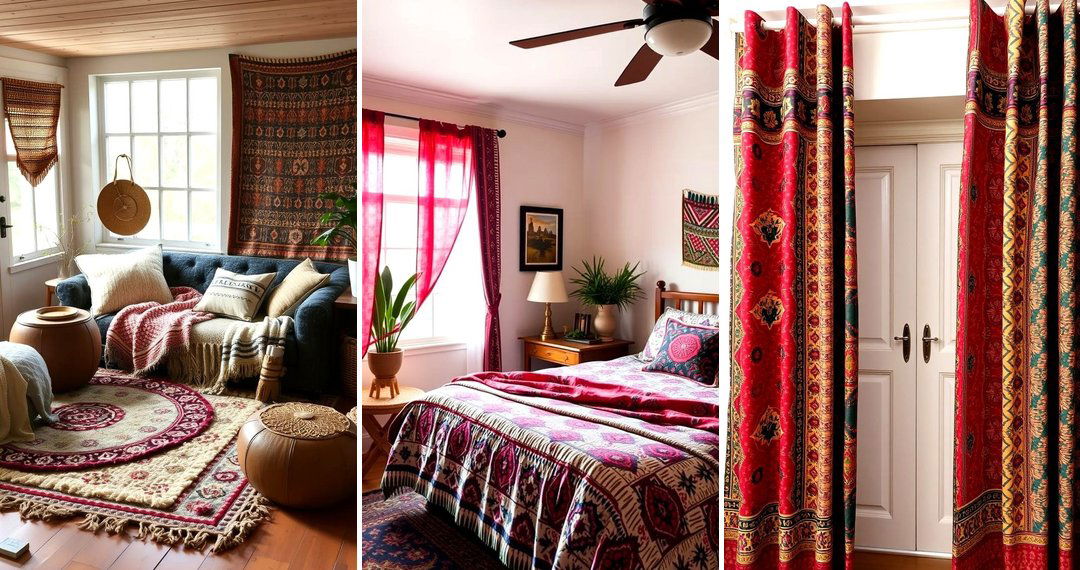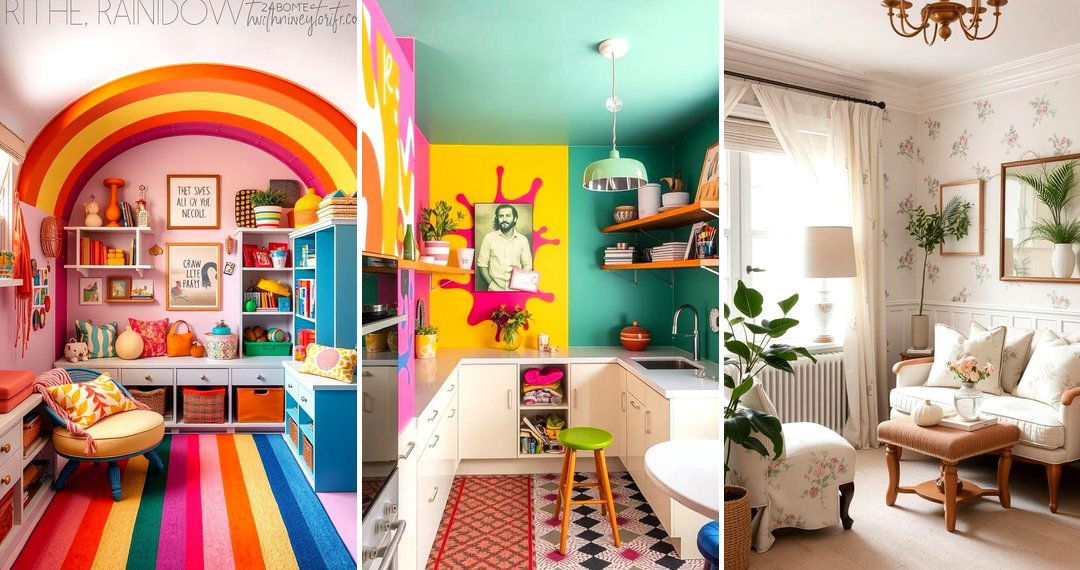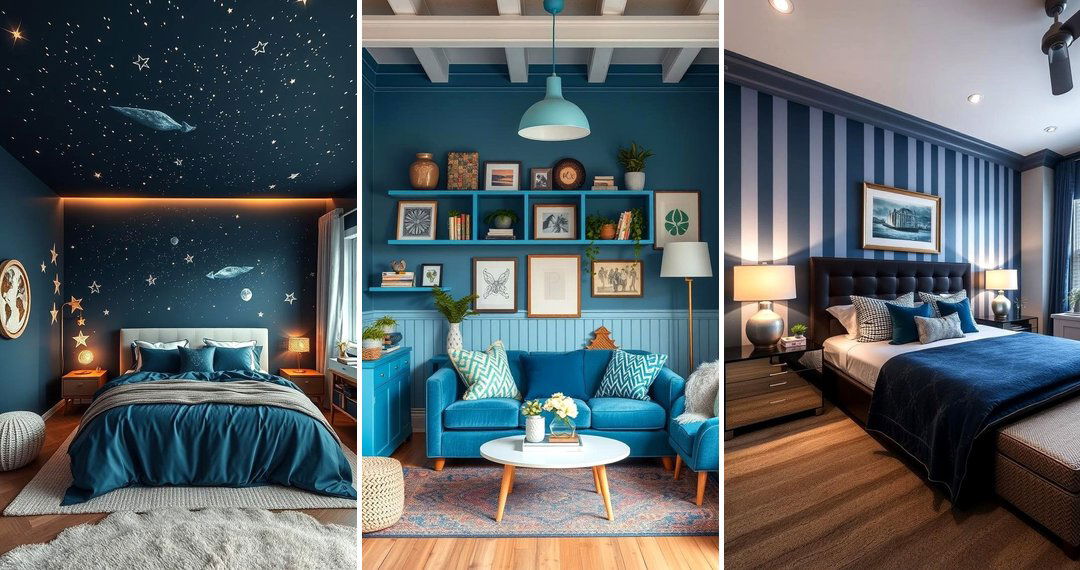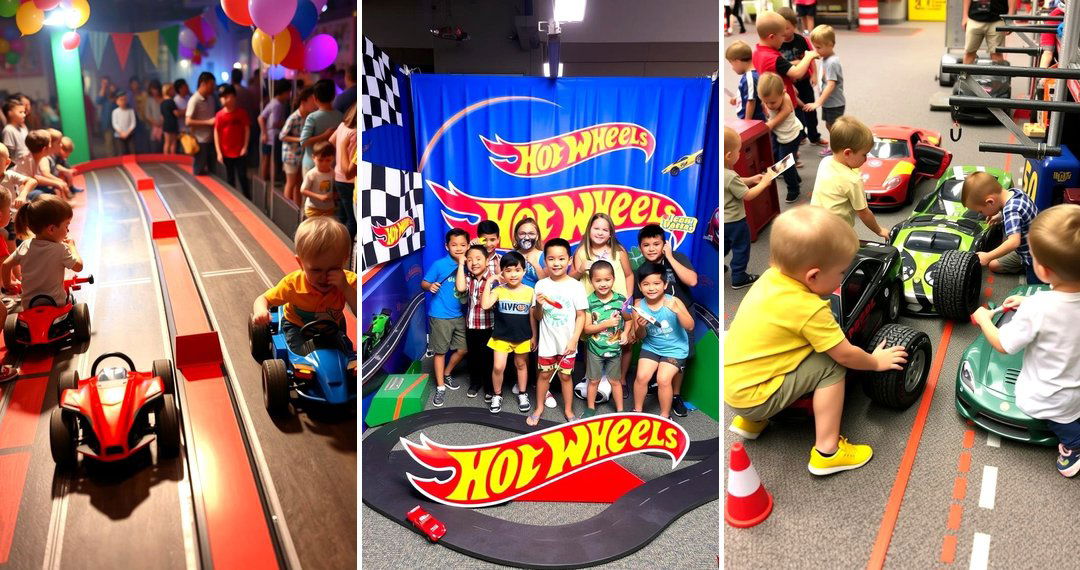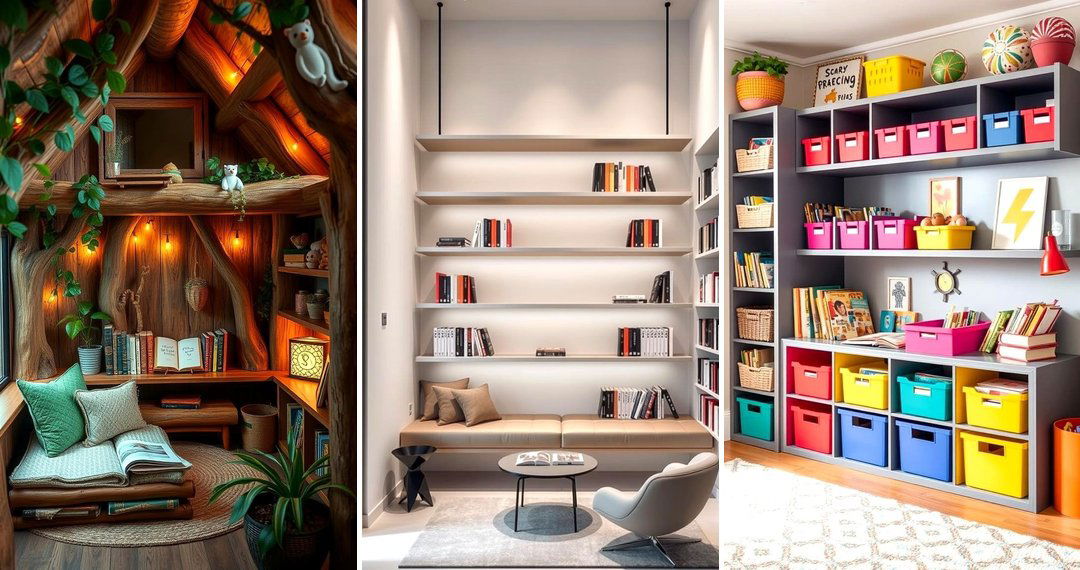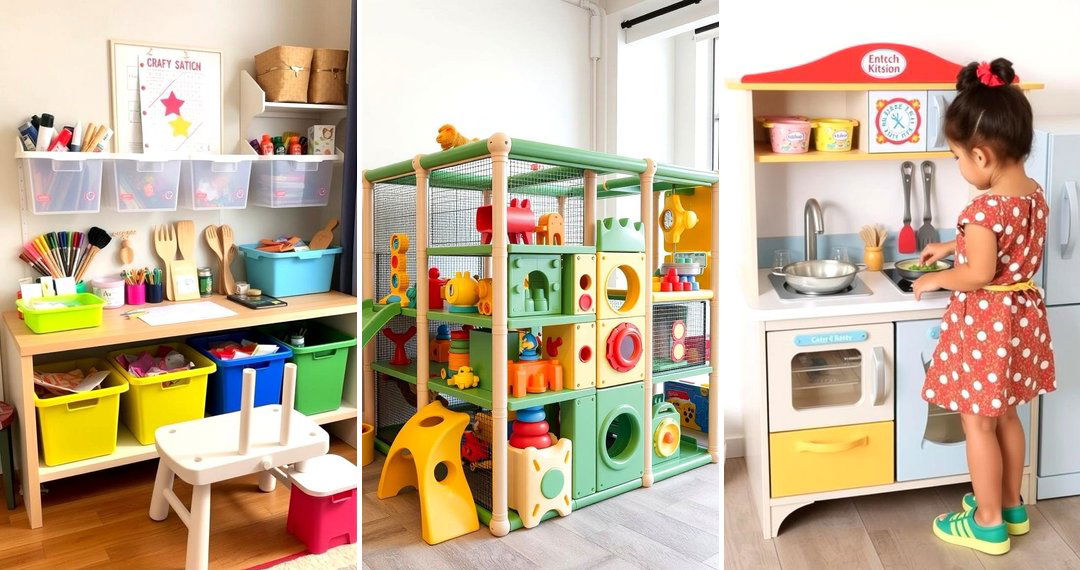Creating a serene and healthy environment for your little one is a top priority for every parent. Embracing eco-conscious choices in the nursery not only contributes to a sustainable future but also ensures a safe and nurturing space for your baby to grow and thrive. From selecting organic materials to incorporating natural elements, numerous innovative approaches can transform a conventional nursery into a green haven. These thoughtful decisions lay the foundation for a healthier start in life, fostering well-being and environmental awareness from the earliest moments. Let's explore some inspiring and practical green nursery ideas that you can easily implement to create a beautiful and eco-friendly space for your precious child.
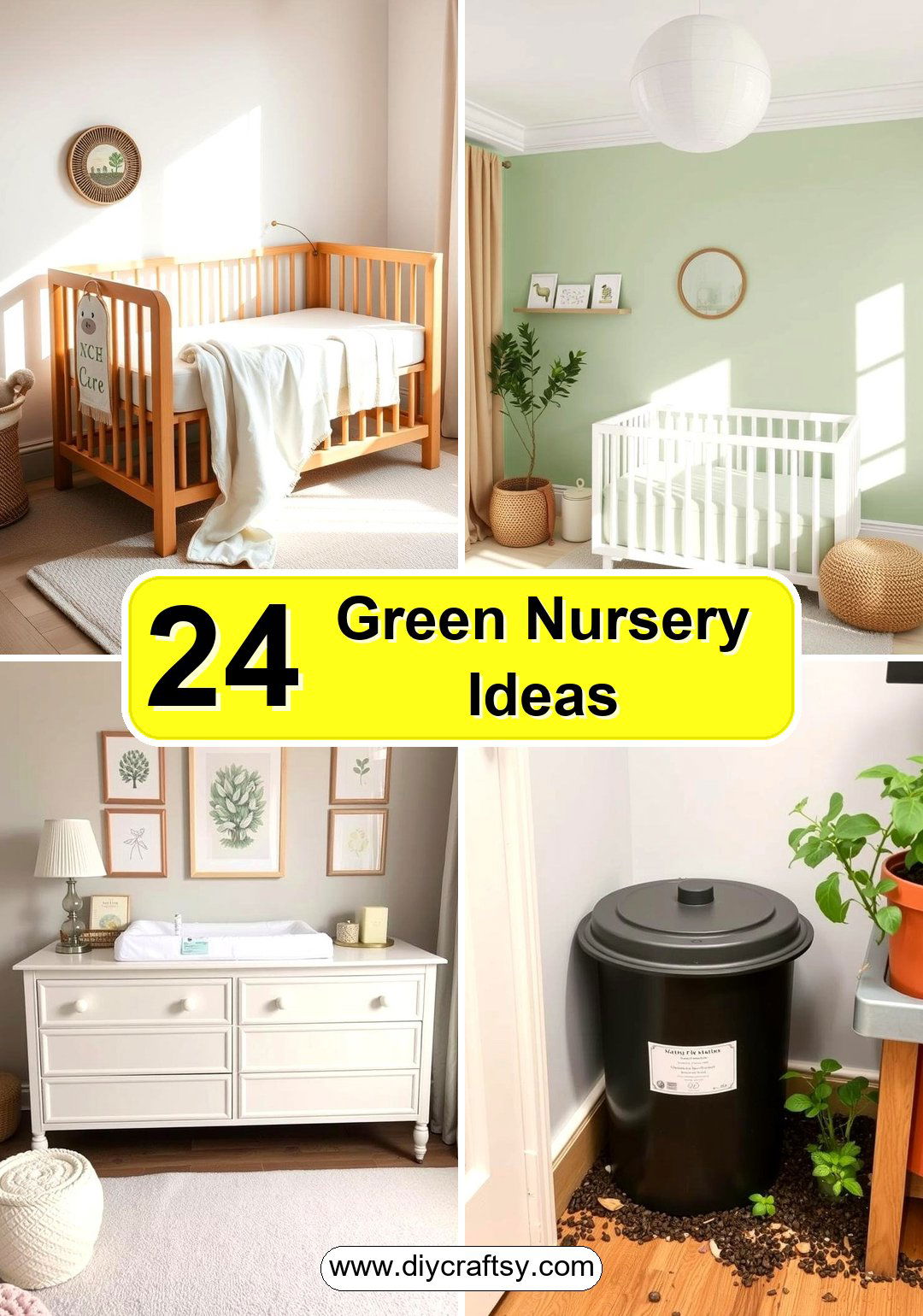
1. Opt for Organic and Natural Bedding

Consider the immediate comfort and health of your baby by choosing organic and natural bedding. These options, often made from materials like organic cotton, bamboo, or linen, are free from harmful chemicals, pesticides, and synthetic dyes that can irritate delicate skin. Bringing these natural fibers into the crib ensures a breathable and comfortable sleep environment, promoting better rest for your little one. Also, supporting brands that prioritize sustainable and ethical production practices contributes to a healthier planet for their future. Investing in organic bedding is a simple yet impactful step towards creating a truly green nursery.
2. Select Low-VOC Paint for Healthy Walls
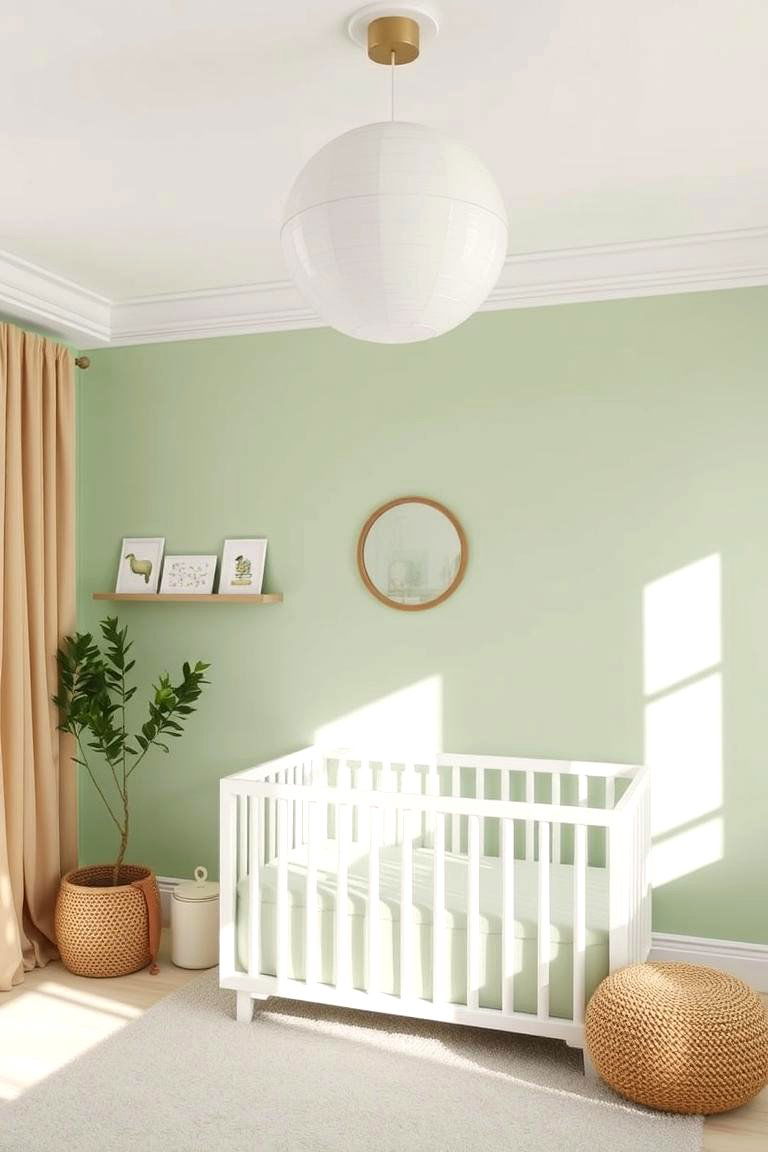
Another crucial aspect of creating a green nursery is the paint you choose for the walls. What many parents don't realize is that conventional paints can release volatile organic compounds (VOCs) into the air, which can be harmful to your baby's developing respiratory system. For a healthier environment, select low-VOC or zero-VOC paints. These paints emit significantly fewer harmful chemicals, ensuring better air quality in the nursery. Furthermore, these eco-friendly paint options come in a wide range of beautiful colors, allowing you to create a visually appealing space without compromising your baby's well-being or the environment.
3. Invest in Sustainable and Eco-Friendly Furniture
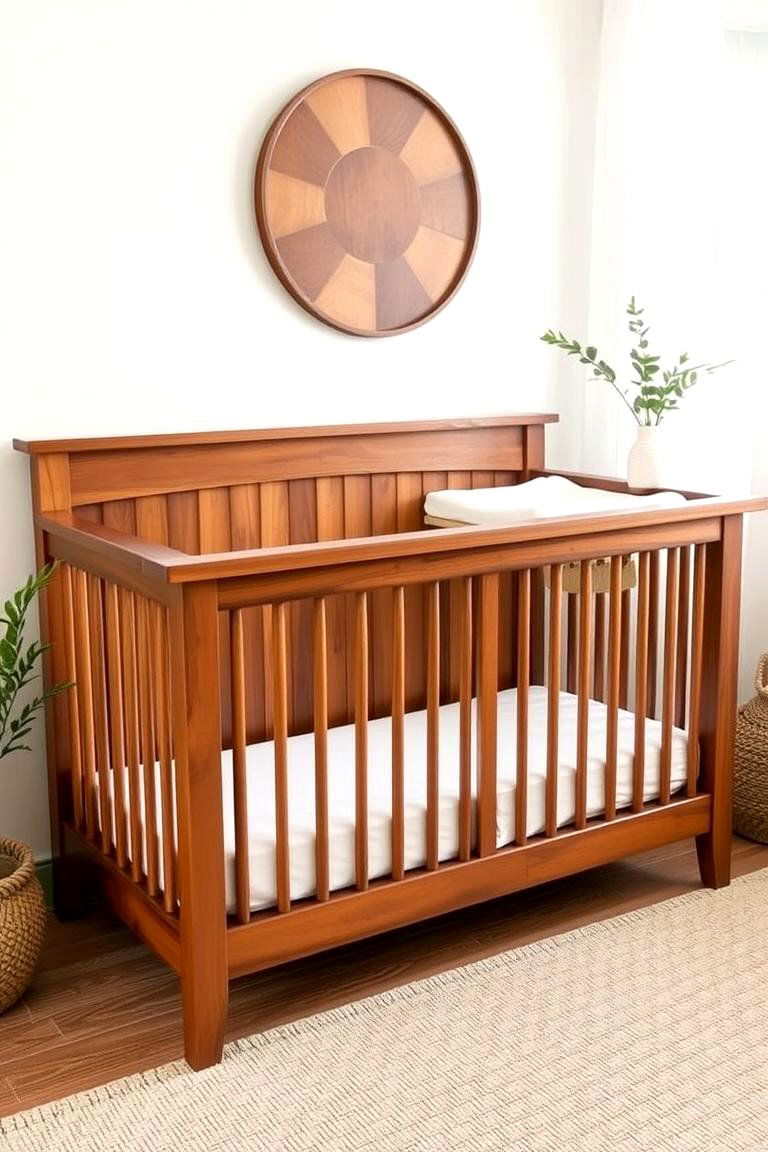
Take a moment to think about the furniture in your baby's nursery. Traditional furniture can sometimes be made with materials and finishes that contain formaldehyde and other harmful substances. One excellent green nursery idea is to invest in sustainable and eco-friendly furniture. Look for pieces made from sustainably harvested wood, bamboo, or recycled materials. Additionally, ensure that the furniture finishes are non-toxic and low-VOC. Choosing durable and well-made sustainable furniture is not only better for the environment but also provides a safe and long-lasting foundation for your nursery.
4. Maximize the Use of Natural Light
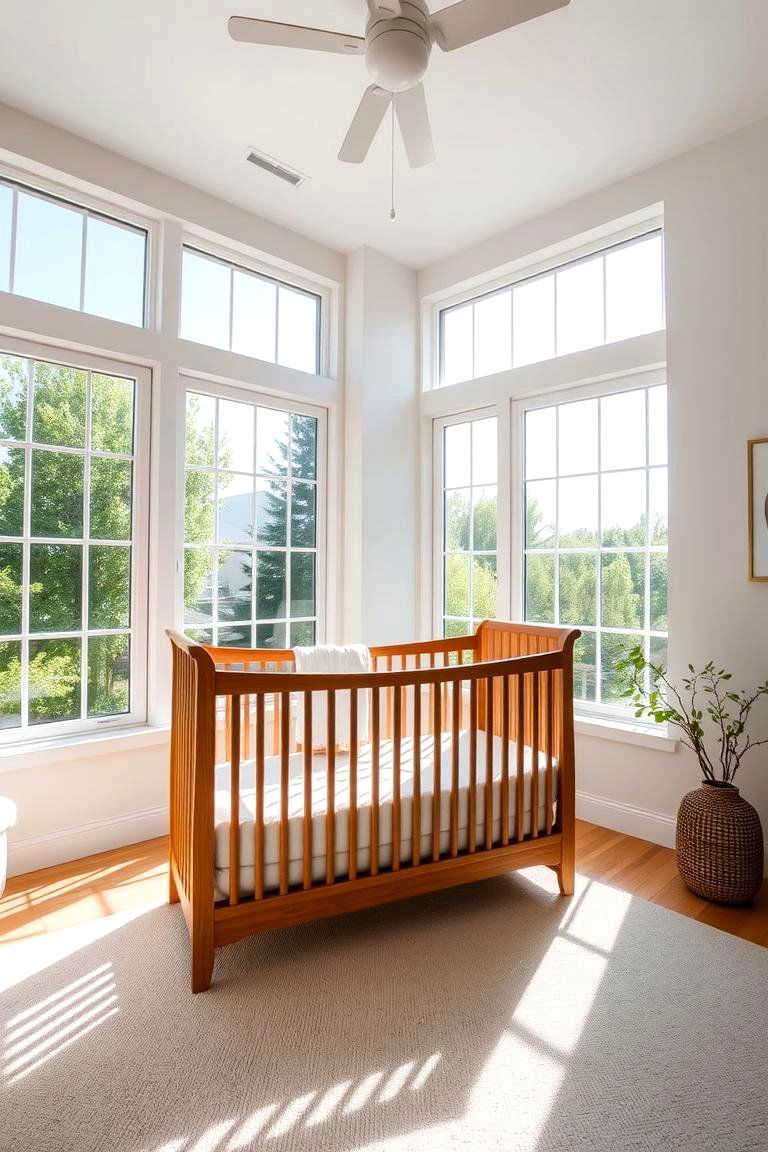
One of the simplest yet most effective ways to create a green nursery is to maximize the use of natural light. Natural light is not only beneficial for your baby's health and development but also helps to reduce the need for artificial lighting during the day, saving energy. Consider arranging the nursery to take advantage of sunlight, perhaps by placing the crib near a window (while ensuring safety and avoiding direct harsh sunlight). Furthermore, light-colored walls and window treatments can help to reflect and amplify natural light, creating a bright and cheerful atmosphere in the room.
5. Install Energy-Efficient Lighting Fixtures
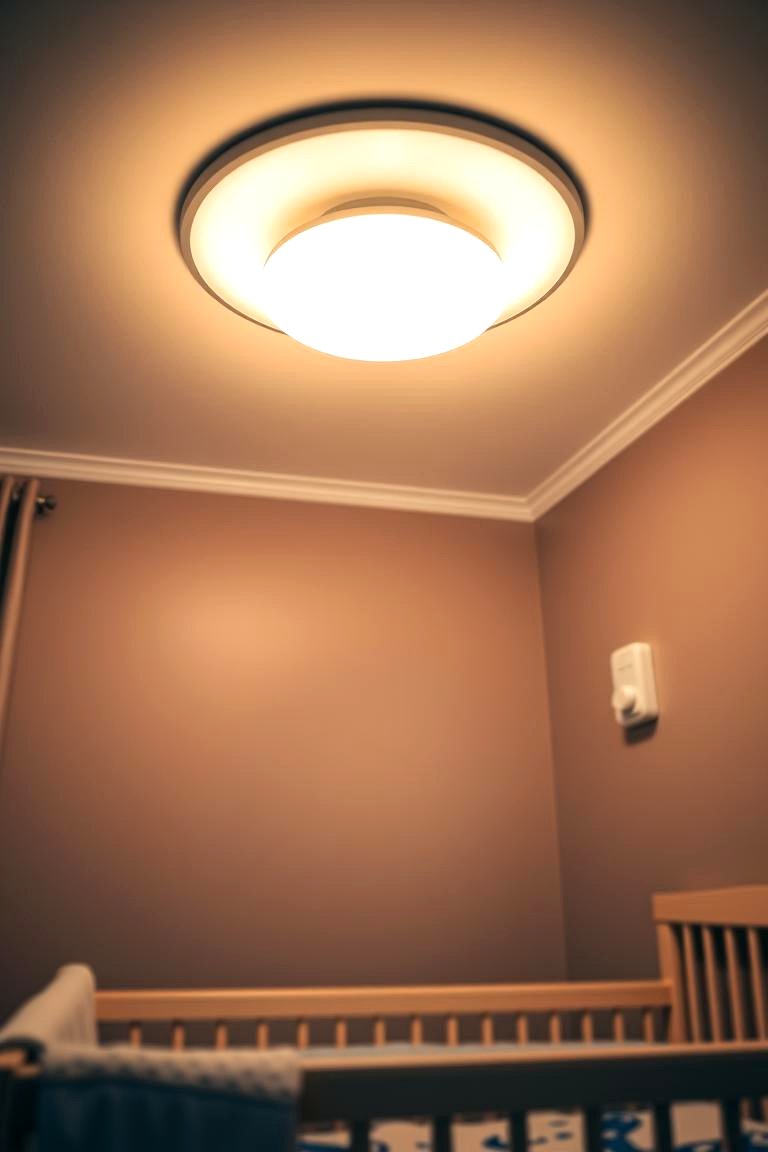
When artificial lighting is necessary, opt for energy-efficient options to minimize your environmental footprint. Consider installing LED light fixtures, which consume significantly less energy and have a longer lifespan compared to traditional incandescent bulbs. These modern lighting solutions also come in various styles and provide ample illumination for the nursery. Moreover, you might consider installing a dimmer switch, allowing you to adjust the light intensity as needed, creating a calming ambiance for bedtime while also conserving energy.
6. Introduce Air-Purifying Indoor Plants

Bringing nature indoors is a fantastic way to enhance the air quality in your baby's nursery. Certain indoor plants are known for their ability to filter out common household toxins and release fresh oxygen. For instance, spider plants, snake plants, and peace lilies are excellent choices for their air-purifying properties. With this in mind, ensure that the plants you select are safe for children and place them out of reach. Not only do these plants contribute to a healthier environment, but they also add a touch of natural beauty and tranquility to the nursery.
7. Implement a Natural Diapering System
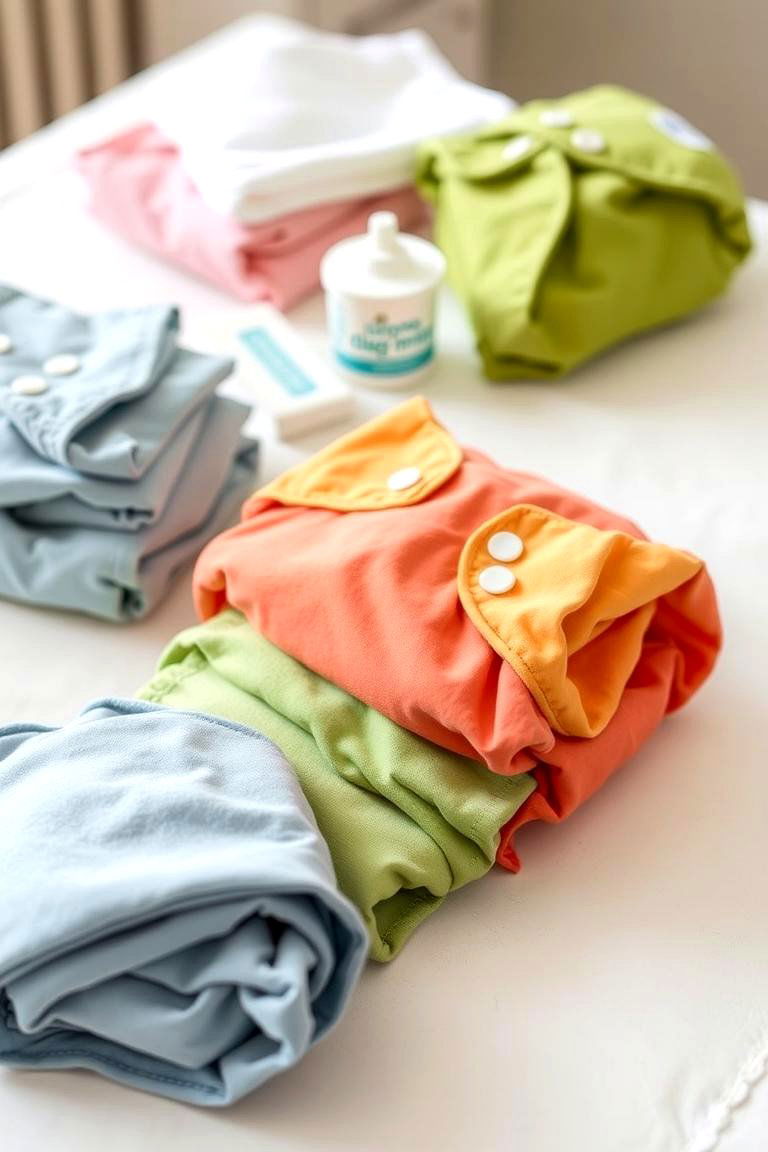
Consider making a significant green choice by implementing a natural diapering system, such as using cloth diapers. Unlike disposable diapers that contribute significantly to landfill waste, cloth diapers are reusable, washable, and often made from natural materials like cotton or bamboo. While there is an initial investment and a bit more laundry involved, the long-term environmental and cost savings can be substantial. Furthermore, many parents find that cloth diapers are gentler on their baby's delicate skin, reducing the risk of diaper rash.
8. Utilize Eco-Friendly Cleaning Products
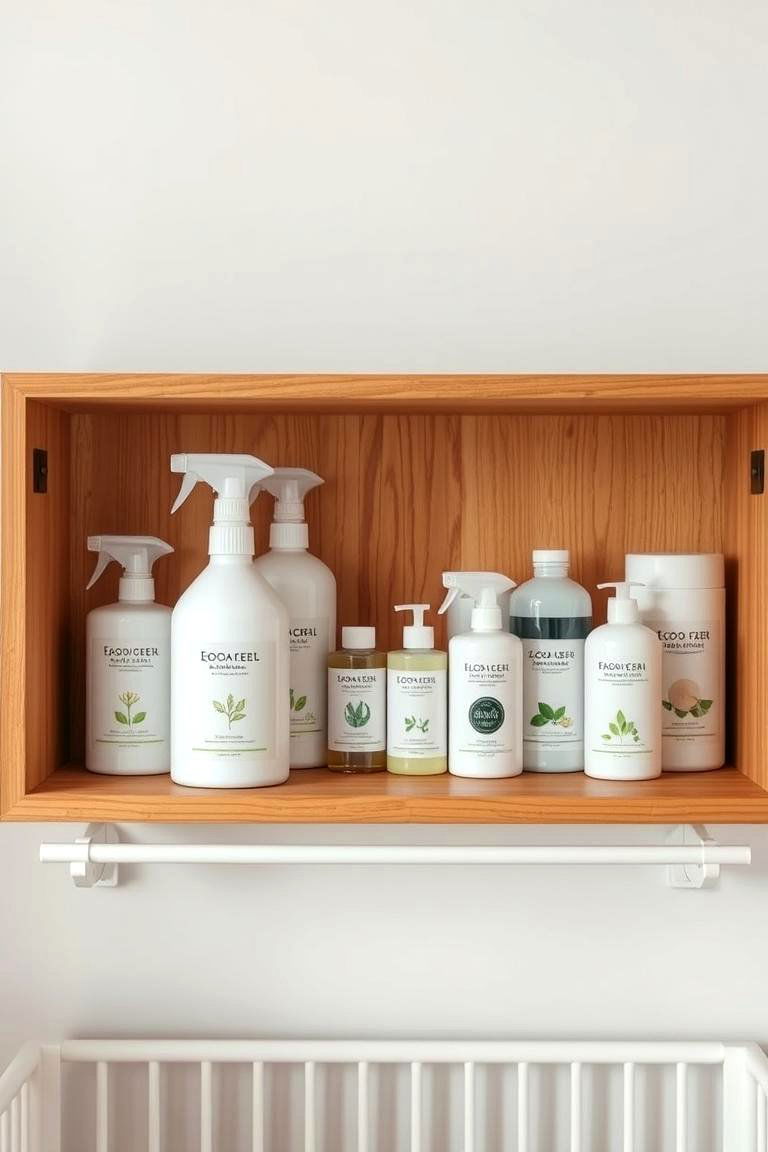
Keeping your baby's nursery clean is essential, but you can do so without resorting to harsh chemicals. Embrace the use of eco-friendly cleaning products that are made with natural ingredients and are free from harmful substances. Look for products labeled as non-toxic, biodegradable, and fragrance-free. Many effective natural cleaning solutions can also be made at home using simple ingredients like vinegar, baking soda, and lemon juice. By choosing eco-friendly cleaning options, you are creating a safer and healthier environment for your baby to explore and grow.
9. Set Up a Compost Bin for Organic Waste
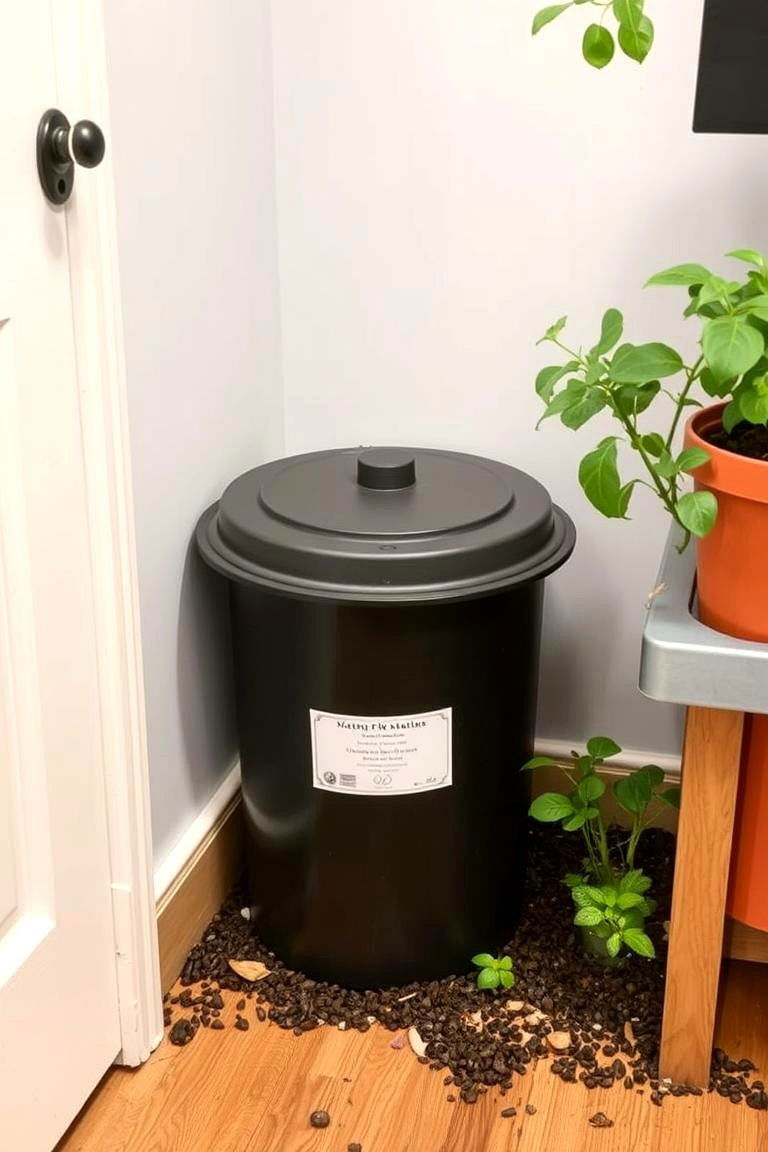
As you care for your baby, you'll likely generate some organic waste, such as food scraps. Consider setting up a small compost bin, either indoors or outdoors, to divert this waste from landfills. Composting not only reduces waste but also creates nutrient-rich compost that you can use in your garden or potted plants. This simple practice teaches valuable lessons about sustainability and helps to close the loop on organic materials, making it a wonderful addition to a green nursery lifestyle.
10. Choose Wooden and Bamboo Toys
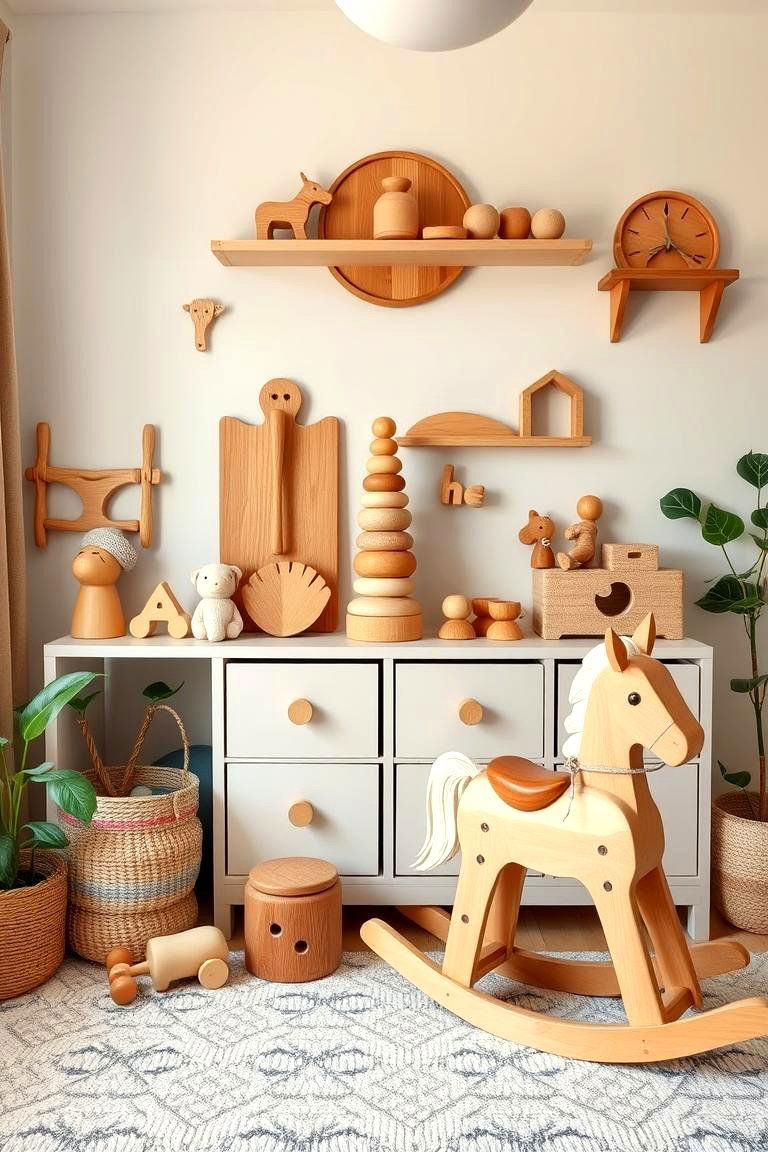
When selecting toys for your baby, opt for those made from natural and sustainable materials like wood and bamboo. Unlike many plastic toys that can contain harmful chemicals and contribute to plastic pollution, wooden and bamboo toys are often non-toxic, durable, and biodegradable. These classic toys also tend to be more engaging and promote imaginative play. Furthermore, supporting companies that prioritize sustainable sourcing and ethical manufacturing practices helps to encourage a more environmentally responsible toy industry.
11. Decorate with Natural and Recycled Materials
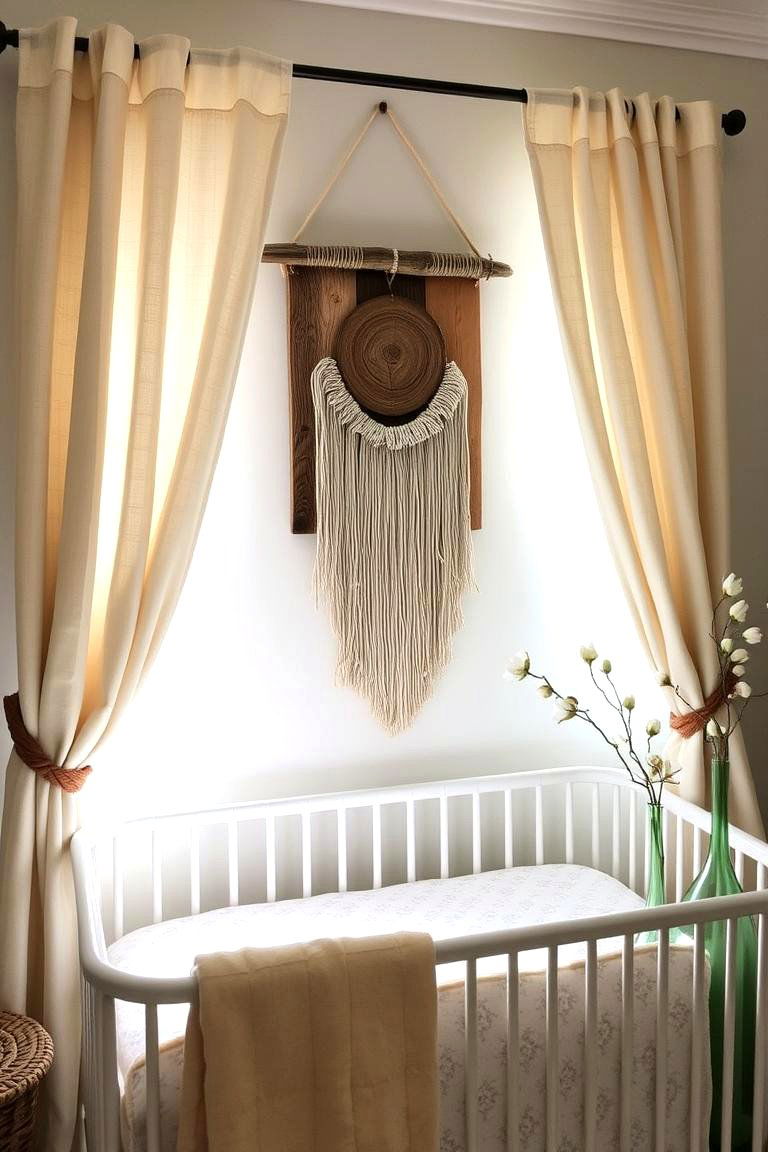
Get creative with your nursery decor by incorporating natural and recycled materials. Consider using organic cotton or linen for curtains and wall hangings. Look for decorative items made from reclaimed wood, recycled glass, or other sustainable materials. You can even involve your creativity by making your own decorations using natural elements like branches, leaves, and stones (ensuring they are safe for a baby's environment). This approach not only adds a unique and personal touch to the nursery but also reduces your environmental impact.
12. Implement Water-Saving Techniques
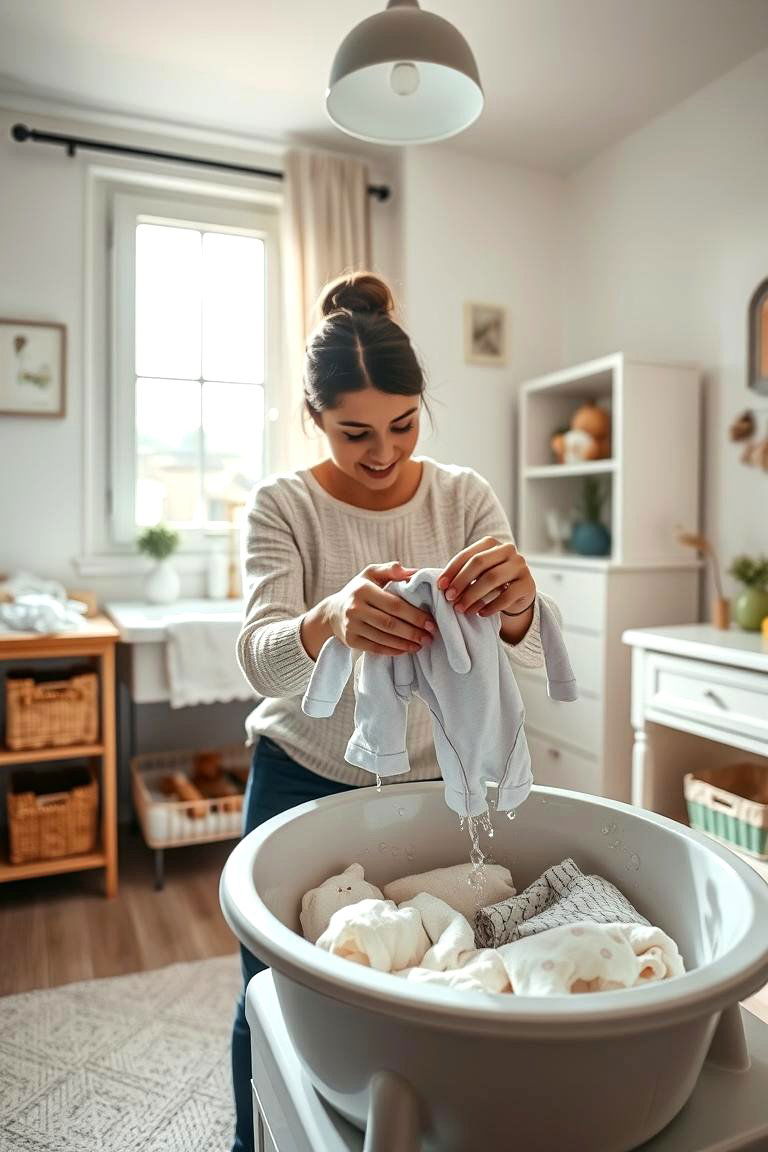
Even in the nursery, there are opportunities to implement water-saving techniques. When washing baby clothes or cloth diapers, try to run full loads in your washing machine. If you handwash items, use a basin instead of letting the water run continuously. Furthermore, when giving your baby a bath, be mindful of the amount of water you use. These small changes can add up over time and contribute to water conservation efforts, making your nursery more environmentally friendly.
13. Install Blackout Curtains Made from Natural Fibers
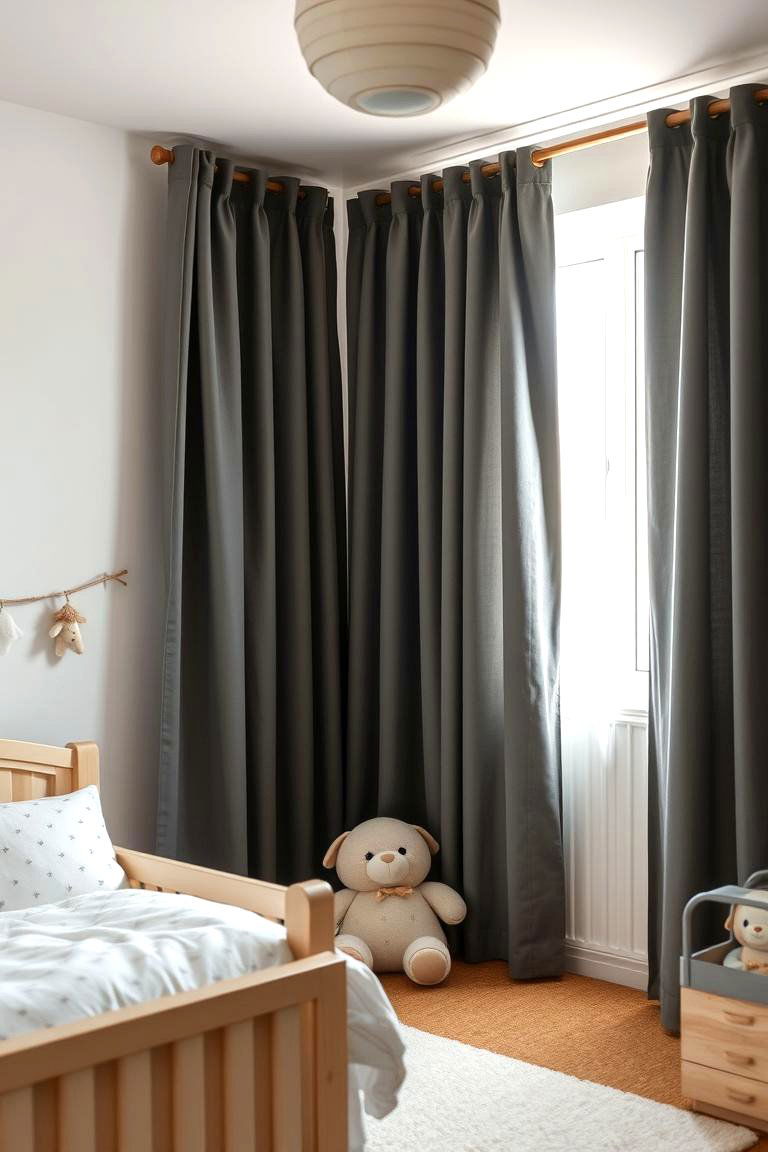
While natural light is beneficial during the day, creating a dark and conducive sleep environment is crucial for your baby's rest. Consider installing blackout curtains made from natural fibers like organic cotton or linen. These curtains will effectively block out unwanted light, helping your baby sleep better. Choosing natural fibers ensures that you are not introducing harmful chemicals into the nursery environment. Furthermore, blackout curtains can also help to insulate the room, keeping it cooler in the summer and warmer in the winter, potentially saving energy.
14. Create a Calming Natural Soundscape
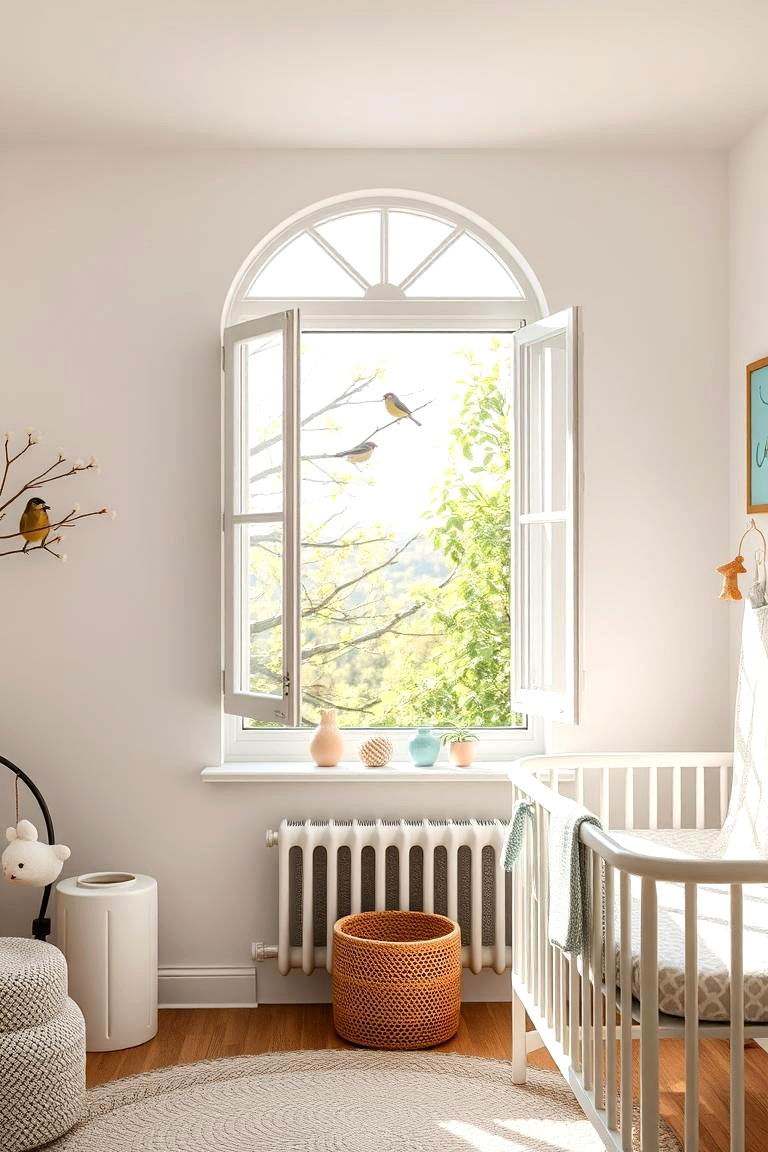
Sound can significantly impact a baby's mood and sleep. Instead of relying on electronic sound machines, consider creating a calming natural soundscape in the nursery. This could involve opening a window (when weather permits and it's safe) to allow the sounds of nature to filter in, such as birdsong or a gentle breeze. You might also consider playing recordings of nature sounds like rain, ocean waves, or forest ambiance. These natural sounds can be soothing and help to create a peaceful atmosphere for your baby.
15. Encourage Natural Ventilation
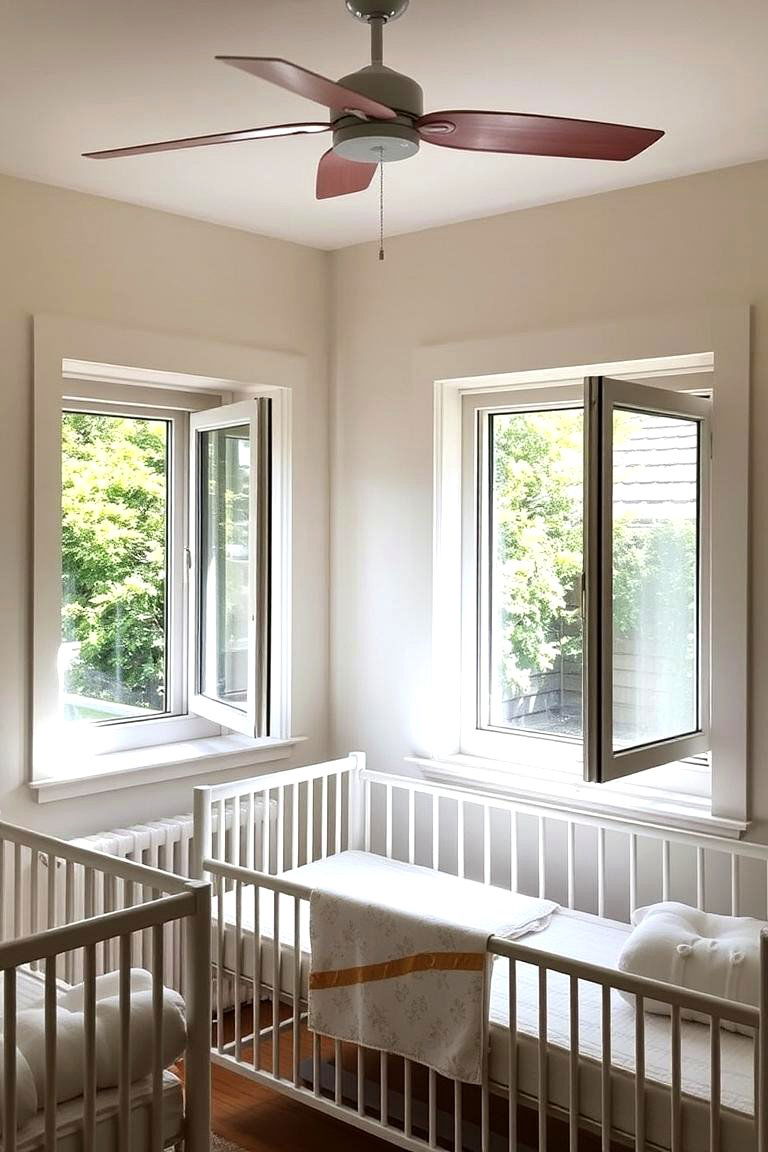
Fresh air is vital for a healthy indoor environment. Encourage natural ventilation in the nursery by opening windows regularly to allow fresh air to circulate. This helps to remove stale air, pollutants, and allergens, creating a healthier space for your baby. Ensure that windows are properly screened to prevent insects from entering and that the room temperature remains comfortable and safe for your child. Natural ventilation is a simple and effective way to improve air quality without relying on energy-consuming air conditioning or purification systems.
16. Use Non-Toxic Adhesives and Sealants
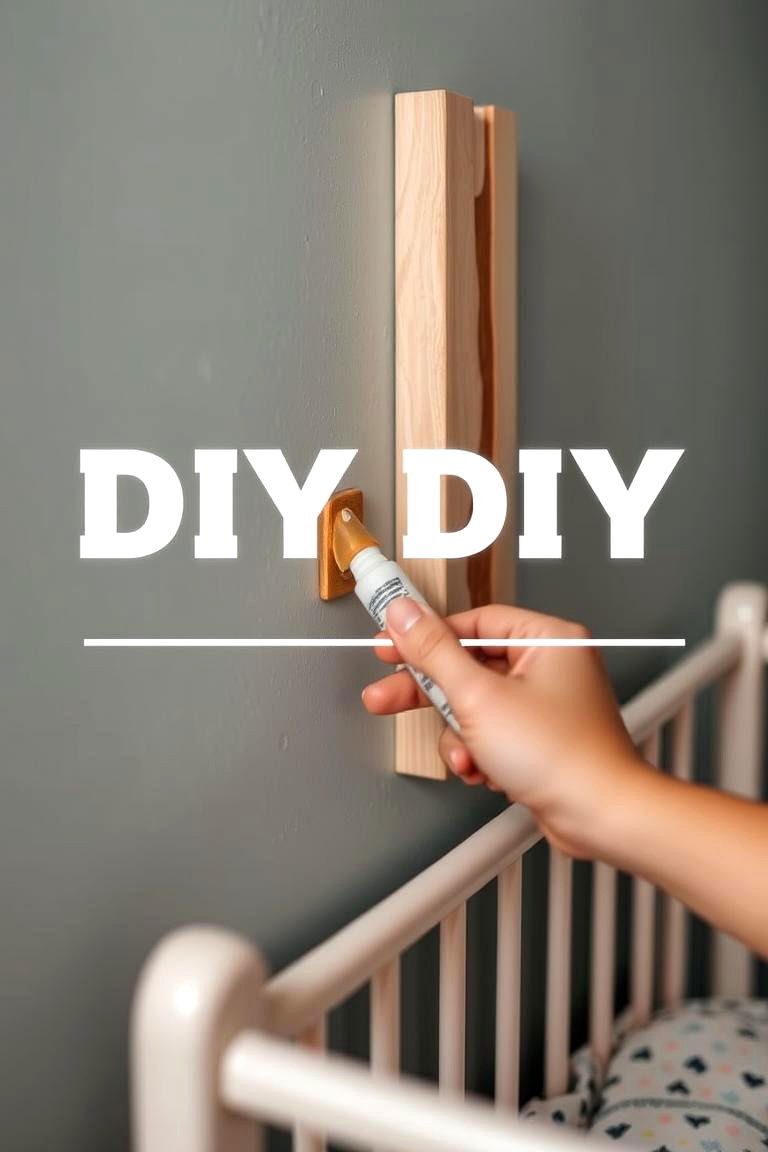
When undertaking any DIY projects or making repairs in the nursery, be mindful of the adhesives and sealants you use. Many conventional products contain harmful chemicals that can off-gas into the air. Opt for non-toxic, low-VOC adhesives and sealants that are specifically designed for indoor use and are safe for children's environments. This small detail can make a significant difference in the overall air quality and safety of your baby's room.
17. Choose Ethically Sourced Textiles
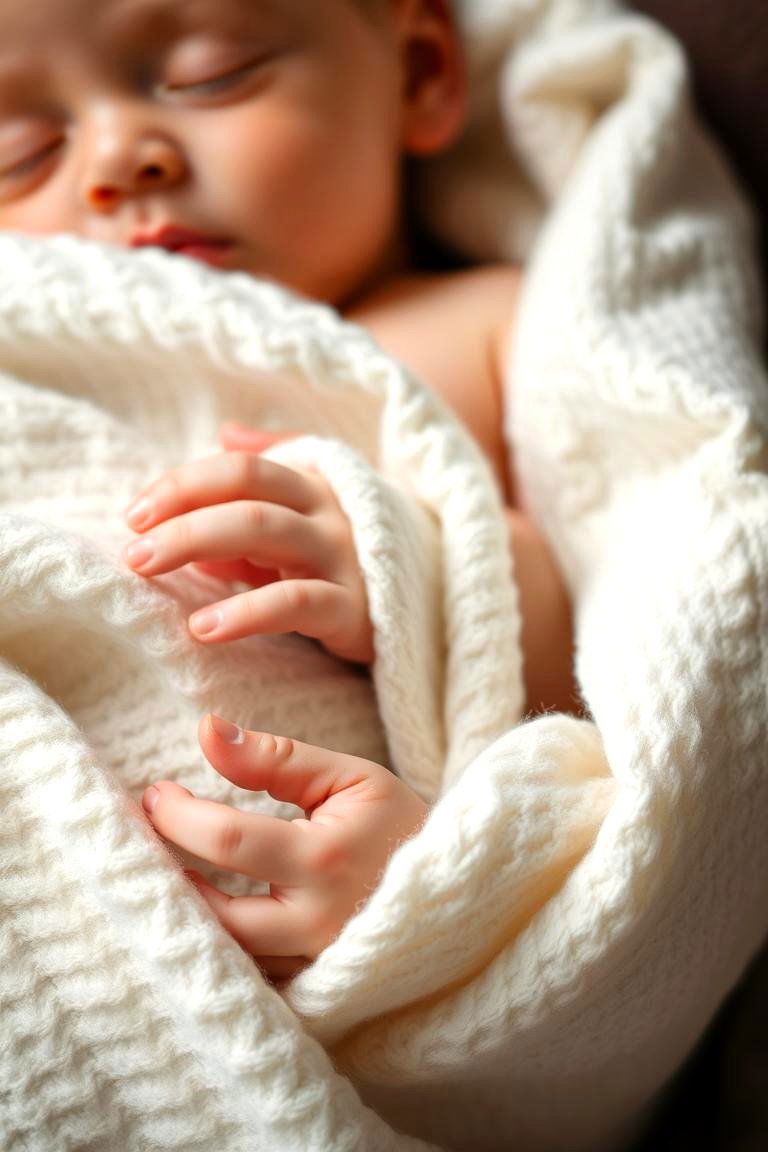
From clothing to blankets to soft toys, textiles play a significant role in a baby's nursery. When making purchasing decisions, prioritize ethically sourced textiles made from natural and organic materials. Look for certifications like GOTS (Global Organic Textile Standard) to ensure that the products meet high environmental and social standards. Choosing ethically sourced textiles supports fair labor practices and reduces the environmental impact associated with textile production, contributing to a greener nursery.
18. Upcycle Old Furniture for the Nursery
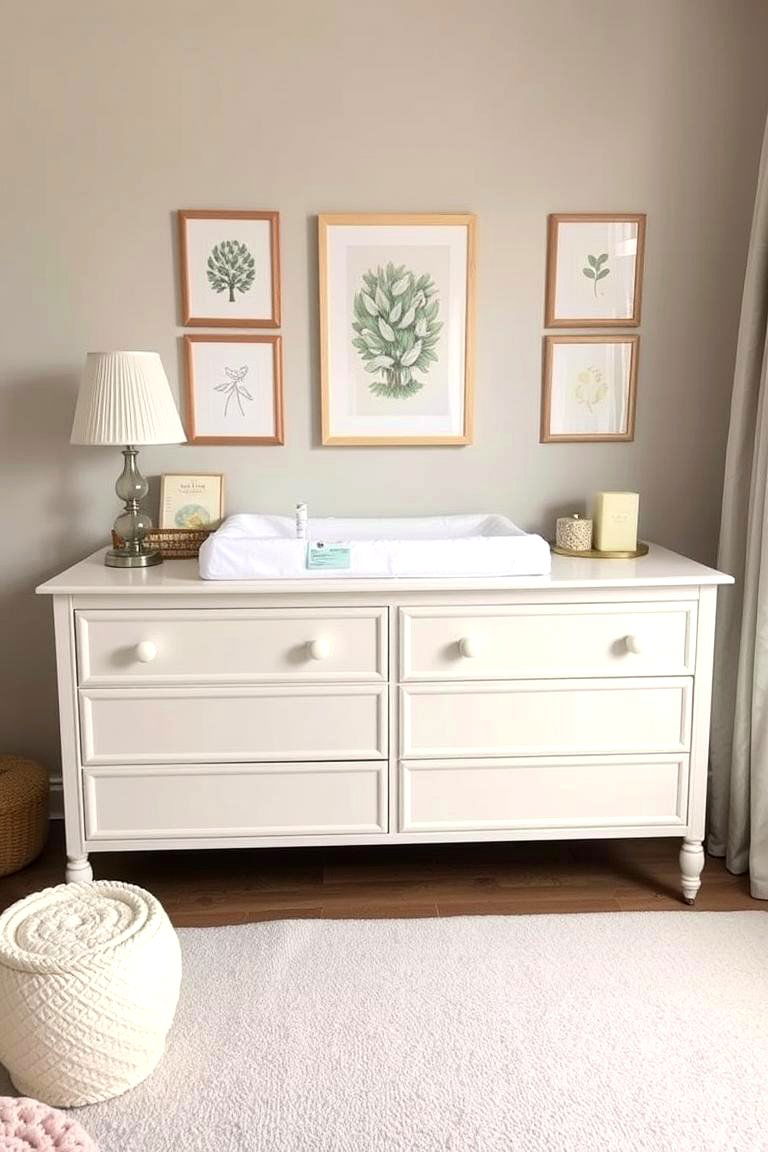
Before buying new furniture, consider whether you can upcycle existing pieces for the nursery. Perhaps an old dresser can be repainted with low-VOC paint and used as a changing table, or a vintage rocking chair can be reupholstered with organic fabric. Upcycling not only saves you money but also reduces the demand for new resources and minimizes waste. This creative approach adds a unique and personal touch to the nursery while being environmentally responsible.
19. Create a Natural Mobile with Organic Materials

Mobiles are a popular addition to many nurseries, providing visual stimulation for babies. Instead of purchasing a mass-produced plastic mobile, consider creating your own natural mobile using organic materials. You could hang lightweight wooden shapes, felt made from natural wool, dried flowers, or even smooth stones from a safe height above the crib. This DIY project allows you to customize the mobile to your nursery's theme and ensures that it is made with safe and natural materials.
20. Use Refillable and Biodegradable Baby Care Products

From baby wash to lotion to diaper cream, babies require a variety of care products. Make a green choice by opting for refillable and biodegradable baby care products. Look for brands that use natural and organic ingredients and offer refill options to reduce plastic waste. Biodegradable packaging is also a plus. By choosing these eco-conscious products, you are minimizing your environmental impact while still providing gentle and effective care for your baby's delicate skin.
21. Incorporate a Natural Play Area with Safe Materials
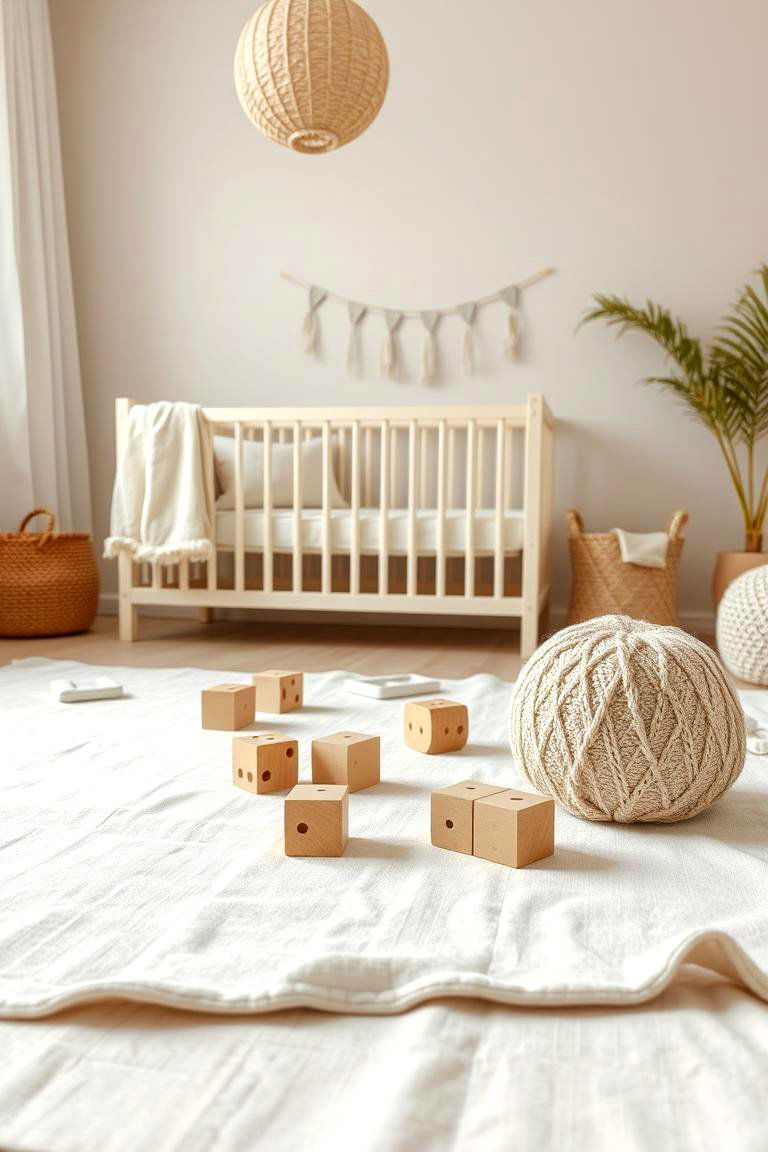
As your baby grows, they will need a safe and stimulating play area. Consider incorporating natural elements into this space. Use soft organic cotton play mats, wooden blocks, and toys made from natural materials. Avoid plastic play structures that can off-gas harmful chemicals. Creating a play area with natural materials not only promotes a healthier environment but also provides a sensory-rich experience for your child, encouraging exploration and development.
22. Choose Books Made from Recycled Paper and Non-Toxic Inks
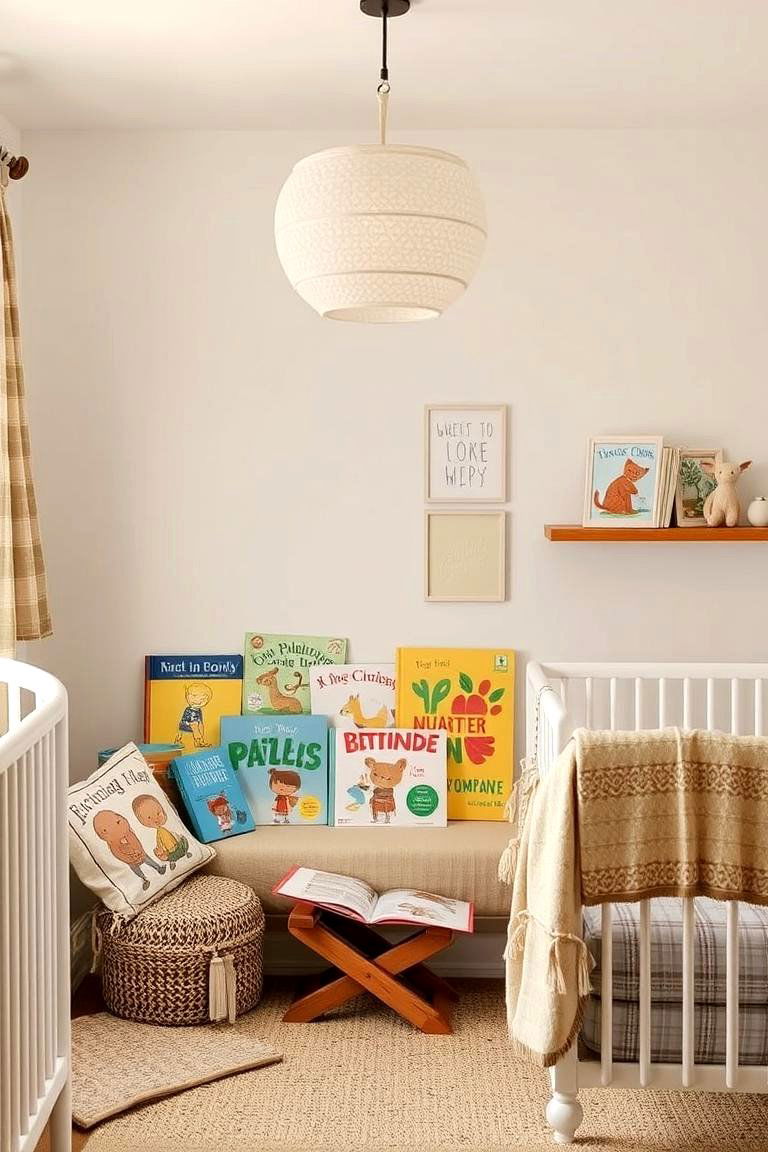
Instilling a love for reading from an early age is wonderful. When building your baby's book collection, look for books made from recycled paper and printed with non-toxic, soy-based inks. These eco-friendly options reduce the environmental impact associated with traditional book production. Many publishers are now offering such sustainable choices, making it easier to build a green library for your little one.
23. Educate the Child About Nature from an Early Age
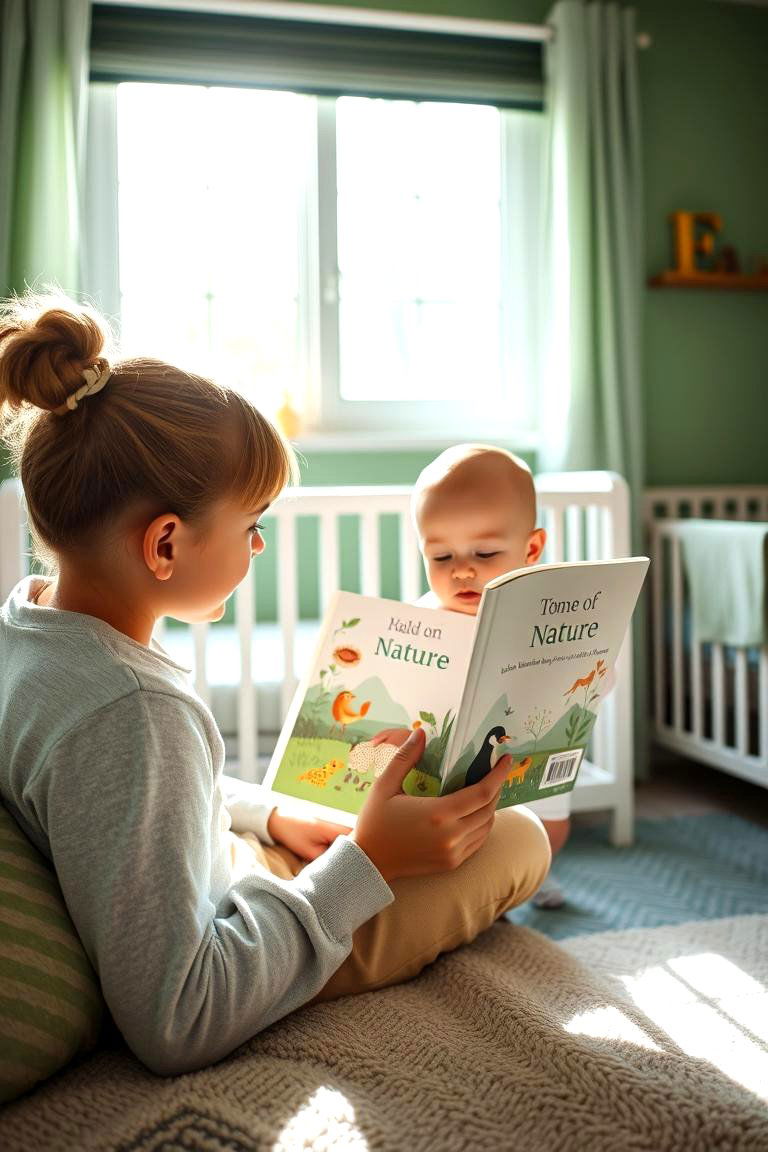
Creating a green nursery is just the beginning. As your child grows, take opportunities to educate them about nature and the importance of environmental stewardship. Talk about the plants in their room, take them outside to experience the natural world, and read books about animals and the environment. Fostering a connection with nature from an early age will help them develop a lifelong appreciation for the planet and its resources.
24. Support Eco-Conscious Brands for Nursery Items
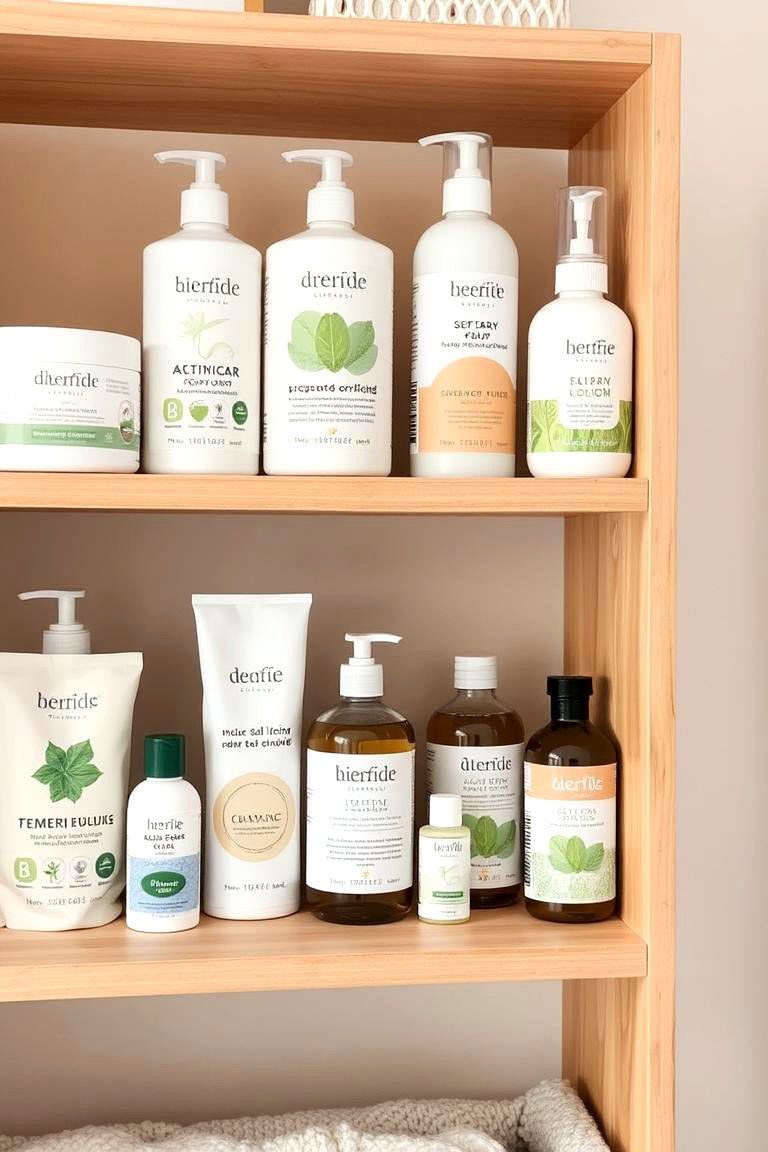
When purchasing items for your green nursery, make a conscious effort to support brands that prioritize sustainability, ethical production, and environmental responsibility. Research companies that use eco-friendly materials, minimize waste in their manufacturing processes, and have fair labor practices. Your purchasing power can make a difference in encouraging more businesses to adopt sustainable practices, contributing to a greener future for your child and generations to come.
Conclusion:
Embracing green nursery ideas is a wonderful way to create a healthy, nurturing, and environmentally responsible space for your baby. By thoughtfully selecting organic bedding, low-VOC paints, sustainable furniture, and natural decor, parents can significantly reduce their child's exposure to harmful chemicals and contribute to a more sustainable future. Incorporating natural elements like plants and maximizing natural light further enhances the well-being of the baby and the eco-friendliness of the nursery. These conscious choices, from implementing natural diapering systems to supporting eco-conscious brands, reflect a commitment to both the child's health and the planet's future. By exploring and implementing these 24 green nursery ideas, you are not just designing a room; you are cultivating a foundation for a healthier and more sustainable life for your little one.


